Space
The James Webb Space Telescope; A look at the vastness of the universe
Published
2 weeks agoon


The James Webb Space Telescope; A look at the vastness of the universe
About 400 years have passed since Galileo first looked into space with his telescope. During this time, we humans have made significant progress not only in astronomy but in all scientific fields. Our knowledge in the field of arranging mirrors and lenses and using new technologies in making tools has given us the power to see the world we live in and to be aware of our place.
-
History of James Webb Space Telescope
-
James Webb space telescope design
-
James Webb Space Telescope Instruments
-
Near-infrared camera (NIRCam)
-
Near Infrared Spectrometer (NIRSpec)
-
Middle Infrared Instrument (MIRI)
-
Precision guidance sensor near-infrared imager and slitless spectrometer (FGS/NIRISS)
-
Satellite bass
-
The mirrors of the James Webb Space Telescope
-
The launch of the James Webb Space Telescope
-
the first hour
-
the first day
-
first week
-
The second week
-
first month
-
The second month
-
the third month
-
The fourth, fifth, and sixth months
-
After six months
-
Objectives of the James Webb Space Telescope
-
James Webb Space Telescope photos
-
summary
Perhaps many of us remember the moment when the Hubble Space Telescope sent the first image of the universe to Earth; It was at that exciting moment that the science of astronomy entered a new era and took a step in the path of progress. Hubble was a telescope that helped us a lot in understanding the universe and by recording amazing images from different parts of space, it reminded us that we are nothing in this world and we should appreciate every moment of our life. The modern science of astronomy is somehow indebted to Hubble; A powerful telescope that has now been replaced by the world’s newest multi-purpose space telescope.
Sometime after the completion of the Hubble construction process, the idea of building a telescope that could replace Hubble was proposed. At first, this telescope was limited to ideas and theories; But gradually it became serious until finally, scientists decided to make it. This telescope is called James Webb, which after years of delay and expense was finally launched in the last days of 2021. James Webb is one of the most expensive and advanced telescopes in the world, and NASA faced various problems in securing the necessary funds for it. This telescope has a complex structure and unlike Hubble, it does not orbit the Earth; Rather, it revolves around the sun in a much more distant orbit. In this article, we are going to get to know James Webb, the newest and most powerful space telescope in the world.
History of James Webb Space Telescope
The idea of developing a telescope to replace Hubble was proposed between 1989 and 1994. This infrared conceptual telescope with a 4-meter aperture was called Hi-Z and orbited the Sun at a distance of 3 AU (three times the distance of the Earth from the Sun). This circuit was very far away, But it also had advantages. The telescope remained an idea until other designs gave it new life. The scientists gave the initial name of this project NEXUS, which was very innovative at the time; But NASA had a different opinion. In the mid-1990s, the US space agency announced that it would invest in a project that would be done quickly, be the best, and have the lowest cost; So NASA’s top managers focused on building a low-cost space telescope. The result of this decision was the NGST concept telescope with an 8-meter aperture that orbits the Sun in Lagrangian 2 (L2) orbit, But it only cost 500 million dollars.
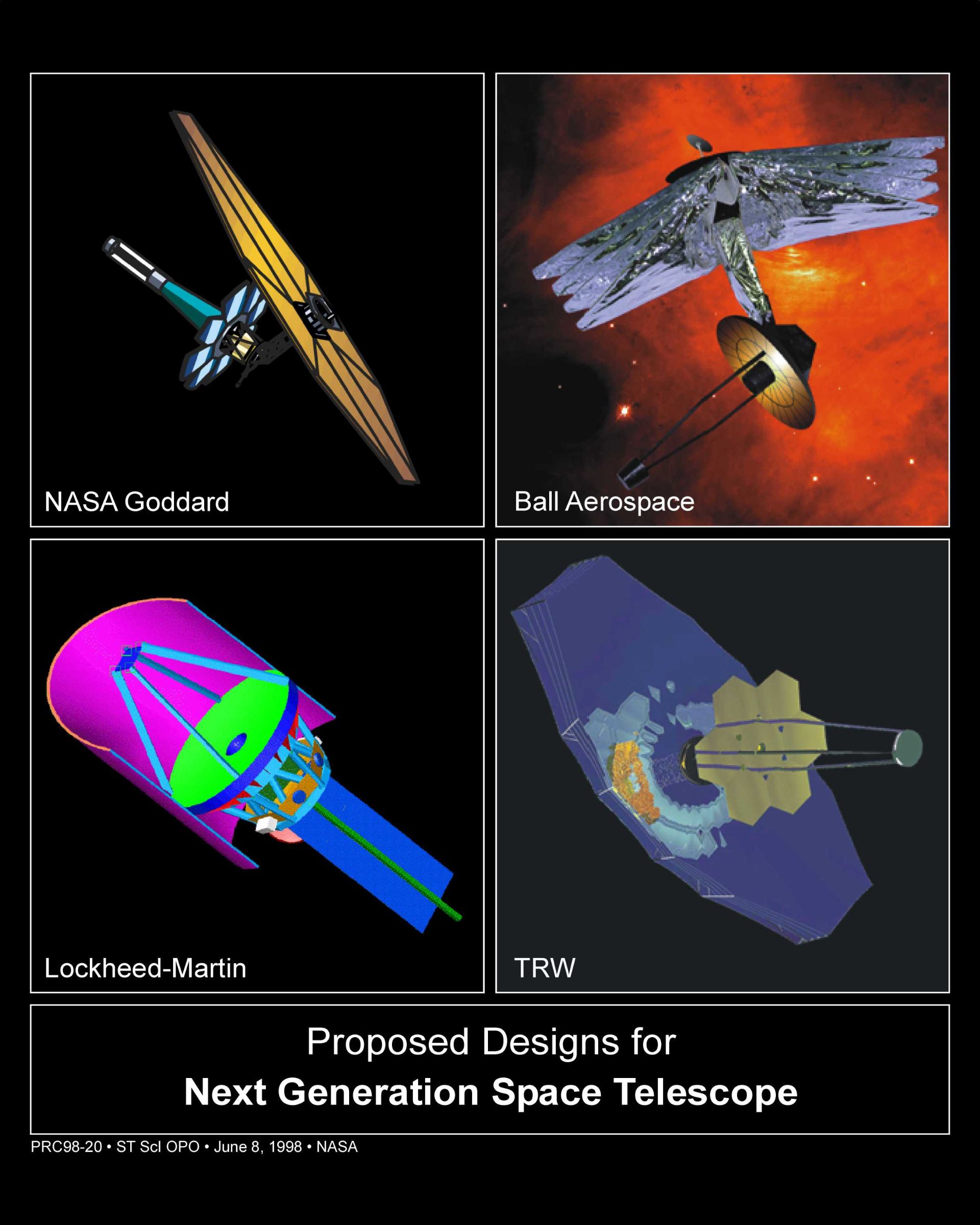
Early proposed designs for the James Webb Space Telescope.
NASA accepted the project and immediately signed a contract with Goddard Space Flight Center, Bal Aerospace, and TRW to conduct studies on the technical requirements of the project as well as its various costs. In 1999, NASA contracted Lockheed Martin and TRW to build an early version of its concept telescope. In 2002, a conceptual telescope was built and TRW agreed to fully build the NGST, now known as James Webb, and deliver it to NASA by 2010 in exchange for $824.8 million. At the end of 2002, TRW was acquired by Northrop Grumman, and the James Webb project was also assigned to this aerospace company.
The initial conceptual design of the James Webb telescope was created in 1996
Northrop Grumman has a long history in the field of aviation equipment, and the F-14 Tomcat (also known as the Grumman legend) is one of the most successful products of this company. According to Grumman’s brilliant history, NASA chose this company as one of the main employers of the project and entrusted it with the task of manufacturing the main parts, including the satellite bus and solar shield, and some small parts of James Webb. Bal Aerospace Company also undertook the task of manufacturing the optical parts of the telescope or OTE for short. OTE consists of a 6.5 m diameter main mirror (including an array of 18 hexagonal mirrors), a 74 cm circular second mirror, a third guiding mirror, and telescope optical structures. On the other hand, the design and construction of the protective tower (DTA) of the telescope was also assigned to Northrop Grumman. The DTA is responsible for protecting the solar shield and the satellite bus during launch and makes the telescope structure as small as possible to fit into the rocket. NASA announced that at the Goddard Space Flight Center, it will develop advanced solar panels that will be responsible for supplying energy to the telescope’s systems and equipment.
NASA later announced in 2005 that there were changes in the program and some of the telescope’s equipment had to be changed, which caused the telescope’s launch to be delayed by 22 months and the launch date was postponed from 2011 to 2013. NASA also announced that it will no longer test systems at wavelengths shorter than 1.7 micrometers to focus on other areas. In 2006, the program had to be revised again; But this time the matter was not only in the technical field, but NASA also had to make a series of changes in the financial field so that the budget it had was distributed correctly.
That same year, NASA estimated that the cost of building and supporting the James Webb Telescope over its life cycle would be about $4.5 billion. Of this amount, $3.5 billion will be spent on design, manufacturing, launch and placement into orbit, and $1 billion will be the cost of supporting the telescope over the decades of the mission. The European Space Agency announced that it will provide 300 million dollars of this funding and will also accept the cost of the launch. On the other hand, the Canadian Space Agency also provided 39 million Canadian dollars from this budget. According to this information, the main cost of the project fell on NASA.

A full-scale model of the James Webb Space Telescope in Battery Park in Manhattan in 2010.
In January 2007, engineers announced that nine of the telescope’s 10 science instruments had successfully passed unshielded tests. In March 2008, the telescope successfully passed the initial design review test. By 2011, the telescope had successfully passed all tests and inspections and entered the final stage of structural design and body design. Since it was not possible to change the design and structure after the project was finalized and the launch time was approaching, the engineers had to use their utmost precision and examine the structure and tools with complete delicacy. From the 90s, when the idea of the telescope was proposed, until 2011, new scientific achievements were achieved that were used in the telescope. For example, in the 1990s, scientists did not know how to design a large telescope with lightweight.
High costs and lack of funds pushed the project to the point of cancellation
Unfortunately, things did not go well, and NASA found that the cost of building the telescope would be almost double what it had been estimated in 2006. This means that the cost of developing and supporting the telescope is about $8.8 billion, which is almost double the $4.5 billion projected in 2006. It was at this moment that there was a risk of canceling the project at any moment, America had just gone through an economic crisis, and NASA was having trouble asking for more funding. Until 2011, the launch date of the telescope was changed 10 times, each time for technical and financial reasons. NASA announced in 2011 that it is not possible to launch the telescope until 2018, and due to the high cost of the project, more tests should be done so that the possibility of error is almost zero.
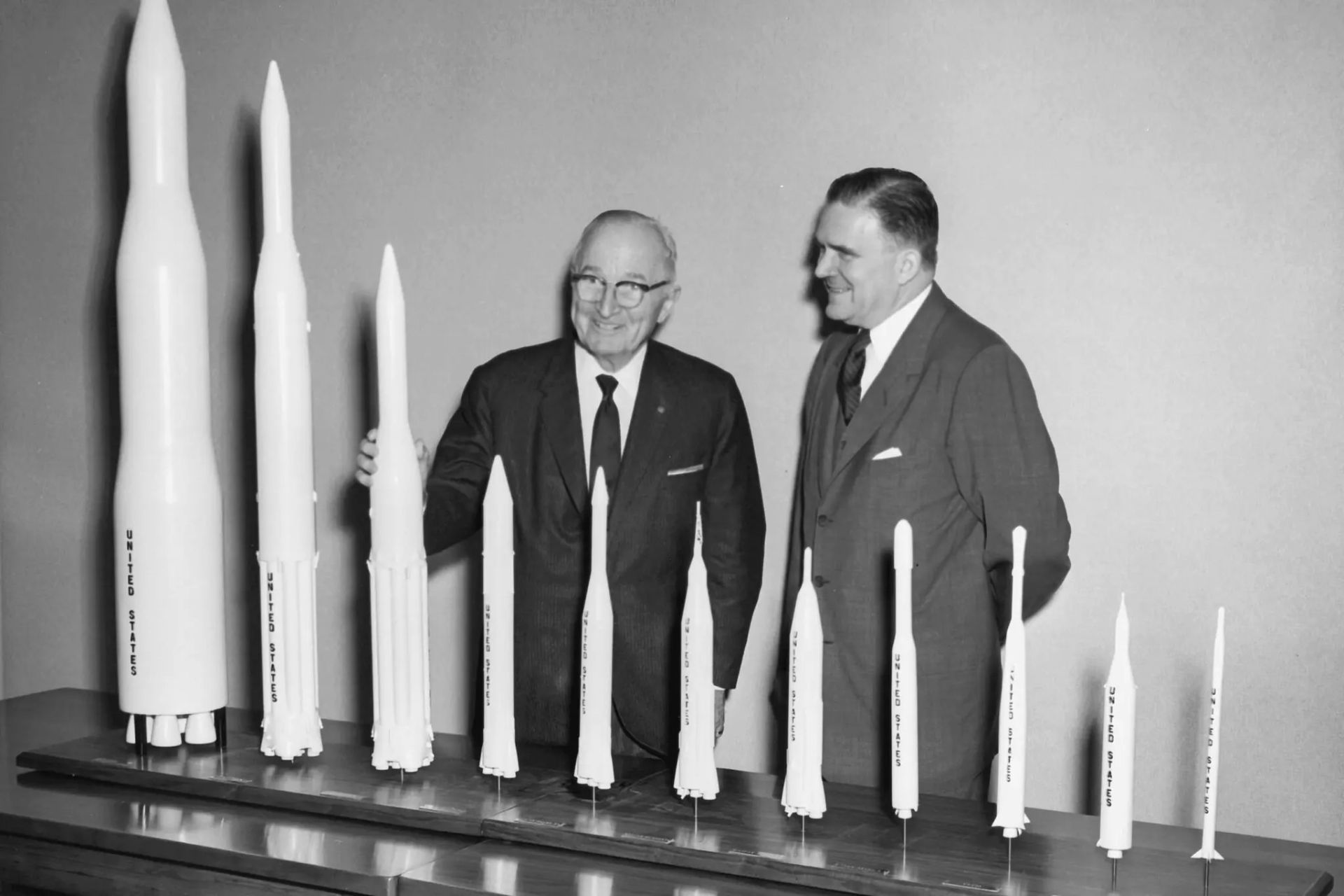
James Edwin Webb (right), former NASA administrator, with former US President Harry Truman in 1961. In 2002, in an unprecedented move, NASA chose the name of a non-scientist for one of its scientific missions.
In 2017, NASA again changed the launch date and postponed it to 2019; Because some instruments needed more testing and the simulation of the placement of the telescope in the rocket had to be done accurately. At the same time, Eric Smith, director of the James Webb project, said:
The spacecraft carrying the telescope and solar shield are larger and more complex than most spacecraft. The process of assembling and integrating some parts is more time consuming than we had planned. For example, we have more than 100 solar shield curtain releasers to test; Also, a while ago we increased the duration of the vibration tests and according to the information we obtained from it, we must say that the integration and testing process will also be time-consuming. Considering NASA’s huge investment in this project and the good and satisfactory performance to date, we have decided to put more sensitivity on these experiments so that everything is ready for the telescope launch in the spring of 2019.
However, the problems seemed insurmountable. On March 27, 2018, it was announced that due to problems with the propulsion system and the solar shield, the telescope would not be launched until at least May 2020. Shortly after, NASA announced the exact launch date of James Webb as March 30, 2021 (April 10, 1400). Then in early 2020, due to the problems caused by the spread of COVID-19 and technical challenges, the launch was postponed to October 31, 2021 (Aban 9, 1400). Various problems appeared one after the other, and the launch date was repeatedly postponed until, after almost 25 years of protracted construction, the strange terrestrial object, which for decades had only appeared in photos and videos, finally took to the skies on 4D1400. made way The timeline of James Webb’s development is as follows:
- 1996: The idea of building a new generation of space telescopes was proposed and its conceptual plan named NEXUS was created.
- 2000: The NEXUS project was canceled.
- 2002: TRW announced that it would cost $824.8 million to build the NGST telescope.
- September 2002: The name of the telescope was changed from NGST to James Webb.
- January 2007: 9 out of 10 science instruments successfully pass unshielded tests.
- April 2010: Testing of critical technical and design sections (MCDR testing) was successfully completed.
- July 2011: The project threatened to be canceled due to lack of funding.
- November 2011: Funding secured and development of James Webb continued.
- 2012: The Mid-Infrared Imaging Instrument (MIRI) was brought to the US by the European Space Agency.
- March 2013: A Full Directing Sensor (FGS) and Near Infrared Spectrometer (NIRISS) were installed on the telescope.
- July 2013: The MIRI component was installed on the telescope.
- March 2014: The NIRCam imager and NIRSpec spectrometer were installed on the telescope.
- June 2014: All instruments were tested in NASA’s cryogenic chamber under simulated space conditions.
- December 2014: The US government added another 650 million dollars to the project budget.
- February 2015: Robotic arms install hexagonal golden mirrors.
- December 2015: The lease contract for the French Guiana launch pad and Ariane 5 rocket was signed.
- March 2016: The cryogenic testing of all equipment and mirrors was successfully completed.
- March 2016: The second mirror was installed on the OTE complex.
- November 2016: The construction of the telescope is officially finished; But more tests were needed.
- January 2017: James Webb is still healthy after experiencing an abnormality in the experiment.
- June 2018: Based on the recommendation of an independent review board, James Webb’s launch is postponed to March 30, 2021.
- July 2020: The global coronavirus pandemic and technical problems caused the launch to be postponed until October 31, 2021.
- December 25, 2021: The James Webb Space Telescope is launched aboard an Ariane 5 rocket from French Guiana.
- January 24, 2022: James Webb reaches its final orbit around Lagrangian Point 2, 1.5 million kilometers from Earth.
- July 11, 2022: Completion of all commissioning activities and preparation for full commencement of scientific activities.
- July 12, 2022: Release of the first full-color images and spectroscopic data.
James Webb space telescope design
The biggest challenge in designing space telescopes is their size. A space telescope is launched into space by a rocket; Therefore, the designers had to do the design in such a way that it is possible to assemble and place the James Webb telescope in the upper part of the rocket. Also, this design should be in such a way that it can be opened in the space as easily as possible.
The James Webb Space Telescope is huge. The main mirror of this telescope has a diameter of 6.5 meters, and none of the current launch devices have the ability to accommodate a device with these dimensions. For example, the main mirror of the Hubble Space Telescope has a diameter of 2.5 meters, which made the process of transferring it to space easier. The dimensions proposed for the James Webb telescope made it impossible to transport it into space; But engineers and designers had to think of a solution for this problem. The main mirror of the Hubble telescope, due to its small diameter, was one piece and circular in shape; But since the main mirror of the James Webb telescope has a diameter of 6.5 meters, it could not be designed in one piece.
In this way, the engineers divided the telescope’s main mirror into three parts, which, when opened, are placed next to each other and form a single mirror; But this single mirror could not be any shape because it would cause optical aberration. The task of designing the shape of the mirrors was entrusted to the optical engineers. According to the simulations, the best case for the mirrors was to design them as a set of smaller, hexagonal mirrors. The main mirror of the James Webb telescope is made of a total of 18 smaller hexagonal mirrors that are placed next to each other in a special way, and there is a hole in the center of this mirror.
James Webb is a telescope designed by Casgreen and does not feature a coma
This hole, which is located in the center of the central mirror, plays a very important role. The James Webb telescope is a Korsch telescope. Korsh is a special type of Casgreen design. When a relatively large primary mirror is used in a Newtonian telescope, an optical aberration known as a coma occurs. In this case, points farther from the optical axis are seen as teardrops. In Cassegrain telescopes, this problem is significantly reduced. In these telescopes, the primary mirror or mirrors, which are concave, receive light from the sky and reflect it to the secondary mirror, which has a convex and hyperbolic surface. This light is then reflected from the secondary mirror and reaches the eyepiece. In these telescopes, which are known as Cassegrains, the distance of the coma is significantly reduced.
The James Webb telescope is also of the Casgreen type, and the center of its main mirror is perforated so that the secondary mirror sends the reflected light to the eye placed behind the central hole. Casgrain design has many advantages, including the compactness of telescopes that use this design. In Cassegrain telescopes, the focal length is long and the image distortion is reduced. The Hubble telescope uses this type of design; In fact, many research telescopes have a similar design.

Another challenge faced by the designers was the telescope’s solar shield. The James Webb Telescope can observe infrared and near-infrared lights. In order to receive and observe these thermal signals, the temperature of the telescope must be extremely low. To protect the telescope from light and heat sources (such as the Sun, Earth, Moon and the body of the observatory itself), engineers designed a 5-layer solar shield made of a very thin material called Kapton, which is the size of a tennis court. This solar shield acts like an umbrella or shade to prevent heat and light from reaching the telescope. This shield has a length of 21.197 meters and a width of 14.62 meters, which is large enough to completely cover the telescope. This layer causes the telescope to be placed in an environment with an average temperature of -223 degrees Celsius.
The interesting point in the design of the solar shield is its multi-layered nature. Scientists could produce this shield as a thick layer, But being 5 layers has its advantages. In this solar shield, each layer is cooler than the outer layers. There is a space between these layers that is a very good insulator; Therefore, the heat is spread between the layers and out. If the solar shield was made of a thick layer, the heat would cover the shield from the top to the bottom and it would be difficult to get it out.
The design of the layers of this solar shield could be any shape, But the engineers found that the best case is the kite-shaped design. This particular design as well as the number of solar shield layers play a key role in the telescope. The distance of these kite-shaped layers has also been determined with high precision and delicacy to have the best performance in the field of cooling. The kite-shaped design of the layers causes the heat to be directed to the sides and the remaining part is transferred between the layers until it finally exits between the layers. This unique design ensures that the heat from the satellite bus is instantly transferred by the layers so that it does not reach the optical equipment.

James Webb Space Telescope Instruments
The main equipment installed on the telescope is integrated and placed on a module. This module, known as the “Integrated Scientific Equipment Module” or ISIM for short, is actually a one-piece scaffolding structure that engineers call the heart of the telescope; Because almost all scientific instruments of the telescope are installed on this chassis. 4 scientific instruments of the telescope are installed on this ISIM and work in an integrated manner. Placing this equipment on a chassis is a very difficult task, and engineers have divided the ISIM into three main areas to simplify the task.
In Area 1, there is a cooling device that is responsible for regulating the temperature of the sensors. These coolers must always keep the temperature of the sensors at 39 degrees Kelvin or -234 degrees Celsius. It is very important to do this; Because the cooling makes the heat of the telescope body not interfere with the infrared light that is the result of the heat of distant cosmic sources. The ISIM temperature management system and optical components also keep the temperature lower to cool the sensors further.
Four advanced scientific instruments are installed on the main module
In area 2, the electronic equipment compartment is placed. This housing has a prominent body that houses electronic components. The temperature of this chamber is different from the outside temperature and is a suitable environment for electronic equipment. The controlled temperature of this part makes the electronic equipment work in the best possible way and their useful life is also increased.
The third area is actually located in the satellite bus. In this area, the command and data processing unit of the telescope is located; Also, integrated flight software and control electronics are located in this area. As it was said, 4 of the scientific instruments of the telescope are placed in this section, which we will introduce and examine in the following.
Near-infrared camera (NIRCam)
NIRCAM is a highly accurate and advanced imager developed by the University of Arizona, which is installed on the ISIM module. This very important piece has two main tasks: first, it must image light in the 0.6-5 micron spectrum, and second, it acts as a coordinating sensor to adjust all 18 mirrors so that they can act as a single mirror. Nirkam is an infrared camera that has 10 detector arrays of mercury-cadmium-telluride or HgCdTe (one of the cadmium telluride alloys used in fast and sensitive detectors in the infrared sensor) and each of these arrays has a resolution of 2048×2048. The infrared camera itself also has a field of view of 2.2 x 2.2 arc minutes, which has an angular resolution of 0.07 arc seconds at a wavelength of 2 microns, and for this reason, it is known as the best camera currently.
Next to Nirkam is a chronograph (imager of the star crown) that works seamlessly with it. A chronograph can help gather data on exoplanets, and can image anything near a very luminous body; Because it can completely remove the light of the objects so that the objects around them are defined. The Nirkam camera only works at -236 degrees Celsius.
The Nirkam camera can capture objects with an apparent magnitude of +29 in high resolution during a single exposure of 10,000 seconds (2.8 hours). This camera can view and record at the same time and control the mirrors. All observations of this camera are made between wavelengths of 600 nm to 5000 nm. The precision of the sensors that align the telescope mirrors is so high that they can move the mirrors by less than a human hair. In other words, the movement accuracy of these sensors is at least 93 nm; But during the tests, this accuracy reached 52 and 32 nm, which is very surprising.
Nirkam sensors generally consist of the following parts:
- Separate Hartmann sensor (wavefront meter)
- GRISM (combination of prism and diffraction grating )
- Poor lenses
The Nirkam section is also composed of the following sections:
- The killer of mirrors
- Chronograph
- The first reflective mirror
- collimator lenses
- Dichroic beam splitter
- Long wavelength filter wheels (frequency less than 300 kHz)
- A group of long-wavelength imaging camera lenses
- Long wavelength focal plane
- Short wavelength filter wheels
- A group of short-wavelength imaging camera lenses
- Mirror reflecting short wavelengths
- Pupillary lens
- Short wavelength focal plane
Nirkam camera has two separate and complete optical systems that are used for accuracy in imaging. These two systems, known as sections A and B, can work simultaneously and observe two different paths of the sky. The lenses used in the inner parts of these parts are triple refractive lenses. These lenses are made of lithium fluoride, barium fluoride and zinc selenide respectively. These three lenses are parallel and the largest of them has an aperture of 90 mm.
Nirkam has important tasks that are very valuable for science. By exploring the early universe, this camera will examine how the universe’s first luminous objects formed and evolved to tell the history of the reionization of the universe. This camera can predict what the galaxies and galaxy clusters that we see directly look like in today’s universe; Because the sky we see does not belong to the present, but to the past. For example, if you see a star in the sky that is a thousand light years away from Earth, you are actually seeing an image of the star from a thousand years ago; Not the present time! The Nirkam camera can accurately predict the shape of objects near and far. Another important task of this camera is to examine the physical and chemical structure of objects in the solar system. With this work, James Webb can help scientists in understanding the origin of life on Earth.
Near Infrared Spectrometer (NIRSpec)
Niraspec is a multi-mass spectrometer built by the European Space Agency and installed on ISIM. This advanced spectrometer can simultaneously measure the infrared spectrum of nearly 100 objects (such as galaxies, stars, etc.) with low, medium, and high resolution. The field of view of this spectrometer is 3 arcmin by 3 arcmin and it sees wavelengths between 0.6 µm and 5 µm. This spectrometer has a series of unique apertures that can spectrograph objects individually. It also has an integrated field unit called IFU, which is used for 3D spectroscopy. The European Space Agency has been responsible for installing this part on the ISIM chassis.
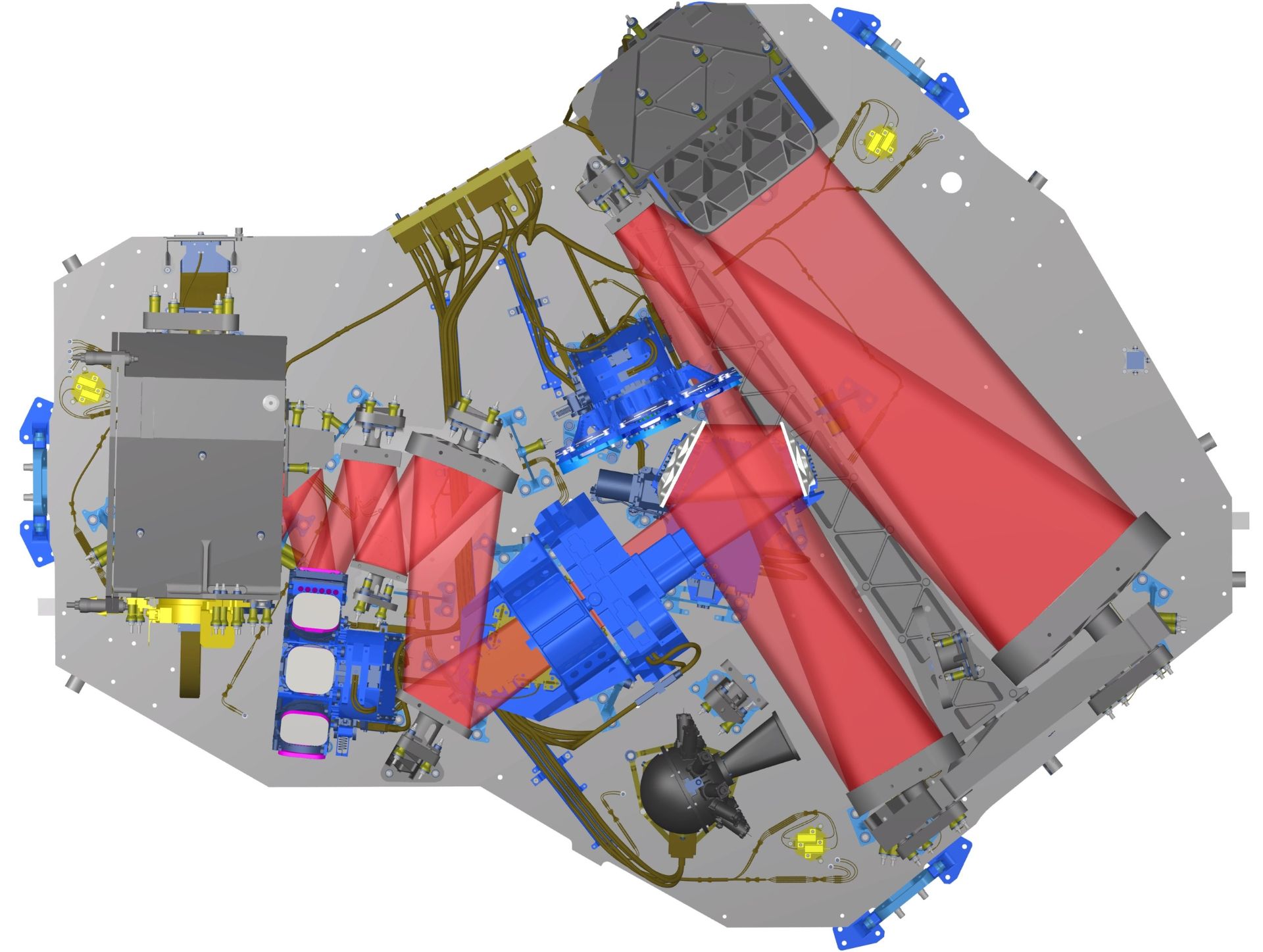
Scientists intend to observe the first light of the universe and the period of reionization with the help of Niraspec. Investigating the formation of galaxies and the birth of stars and non-planetary systems is also one of the goals of this piece. Scientists want to use telescopes to examine planetary systems to find signs of the origin of life.
Optical equipment is all made of silicon carbide
The NIRSpec spectrometer only operates at -235°C, and the task of keeping this temperature balanced is the responsibility of the telescope coolers mounted on the ISIM module. The base of the mirrors in this part, as well as the optical equipment screen, is made of silicon carbide ceramic SIC100, which was used for the first time in the Ariyan space project. The brake disc of the McLaren P1 car is also made of the same ceramic, which has never been used in cars before. Niraspec spectrometer has a length of 1900 mm, a width of 1400 mm, and a height of 700 mm; The weight of this collection is 196 kg, of which 100 kg is only silicon carbide. Four electronic boxes are responsible for controlling this spectrometer.
Niraspec spectrometer has four main mechanisms, which are:
- Spectrum filter wheel
- Refocusing mechanism on the subject (RMA) which has two mirrors
- Microshutter (MSA) equipment used for multiple mass spectrometry
- Diffraction grating wheel (GWA) which has 8 positions. Also, 6 diffraction gratings, a prism, and a mirror are also located in this part.
As mentioned, this spectrometer is responsible for observing the first light of the universe after the end of the dark period as well as the reionization period. Near-infrared spectrometry (NIRS) investigates the earliest light sources in the universe (such as stars, galaxies, and active nebulae) at a spectral resolution between 100 and 1000. These lights indicate the beginning of the reionization period of the world. With the help of a multi-mass spectrometer (objects with a redshift between 1 and 7) at a spectral resolution of 1000, observations of a large number of galaxies are made in order to provide scientists with more information about smaller objects in the early universe.
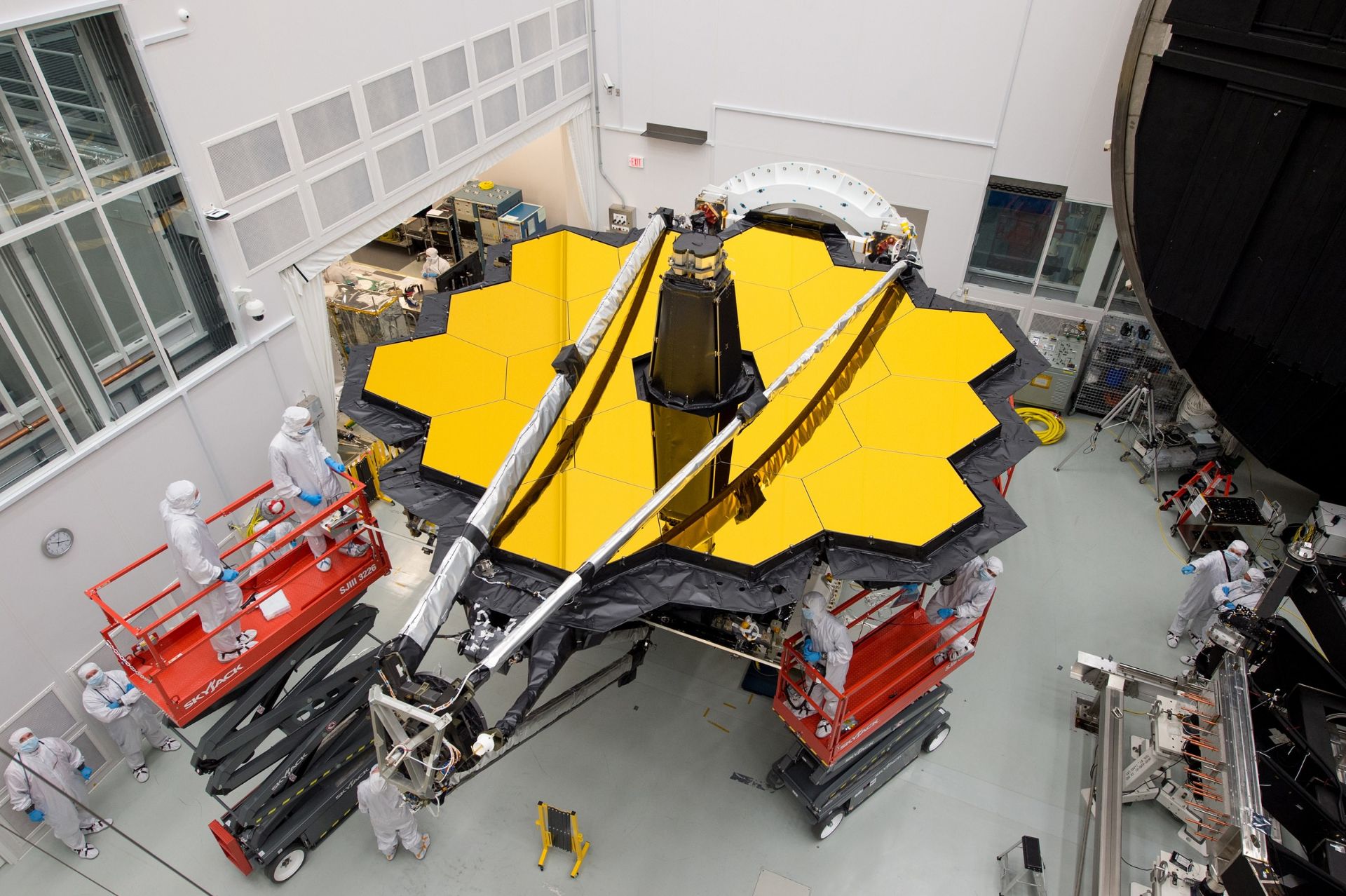
One of Niraspec’s spectrographs takes high-contrast images and can observe objects with a spectral resolution of 100 to several thousand in order to provide scientists with a complete and accurate picture of the formation and evolution of stars and star systems. Another task of this spectrographer is to examine the objects of the solar system in high contrast and medium spectral resolution. Planets, moons, comets, and objects in the Kuiper Asteroid Belt are examined by this spectrograph so that scientists can learn more about the origins of life.
Middle Infrared Instrument (MIRI)
Miri is an advanced spectrometer built by the European Space Agency and NASA’s Jet Propulsion Laboratory. Miri actually consists of a camera and a spectrometer that observes mid-infrared between 5 microns and 28 microns. Miri also has a chronograph, which is specially used for observing exoplanets. Most of the James Webb telescope’s instruments observe the near-infrared spectrum or some wavelengths of visible light; But Miri, through other equipment, can observe longer wavelengths of light. The instrument uses arsenic-doped silicon arrays to observe at long wavelengths. Miri’s imager is designed to have a wide field of view, But Miri’s spectrometer is not like this and has a limited field of view.
As you go, you see longer wavelengths; So it needs to be cooler than other equipment. For this purpose, engineers have considered a special cooling system for this part, which includes a pre-cooling pulse tube and a Joule-Thomson ring as a heat exchanger. This equipment causes the temperature of Miri to drop to 7 degrees Kelvin or -266 degrees Celsius when working in space.
In fact, the spectrograph installed in Miri can observe wavelengths between 4.6 and 28.6 microns and has four separate channels, each with its own diffraction grating and image-cropping tool. The field of view of this spectrograph is 3.5 arc seconds by 3.5 arc seconds. In early 2014, sensors were installed on the ISIM module and their integrity was tested. Miri is mounted by a plastic hexapod structure and carbon fiber mounts on the ISIM and next to the satellite bus; But it is isolated so that it has a certain and constant temperature and is not affected by the temperature of the surrounding environment and the bass, which heats up a lot.
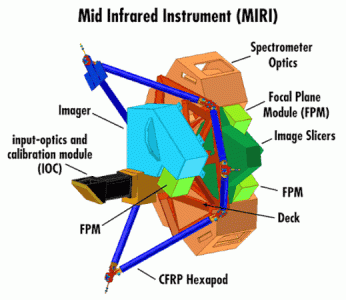

The main parts of Miri are:
- spectroscopic optical equipment (including main spectrographs and prerequisites)
- Arrays of focal planes
- Input light calibration module (including mirrors, imager calibration source and pollution control cover)
- Plastic hexapod and carbon fiber legs
- The main cameraman
- Image cropping tools
- The main page where the equipment is located
Most of Miri’s parts are placed in the main structure of ISIM; But the cooler is located in zone 3, which is near the satellite bass. Miri’s main imager has a special low-resolution spectrograph that can perform cut-free spectroscopy between wavelengths of 5 to 12 microns. The prisms of this spectrometer are made of germanium metal and zinc sulfide to cause more light scattering.
Dysfunction detectors can detect the redshift of distant galaxies, newborn stars, faint comets, and objects in the Kuiper Belt. The spectrometer can also image with medium resolution, which provides scientists with new information about distant objects; Information that Hubble is unable to collect.
Precision guidance sensor near-infrared imager and slitless spectrometer (FGS/NIRISS)
FGS/Nyris is another scientific instrument installed on the Canadian Space Agency’s ISIM module. These instruments are actually a combination of a full-conductivity sensor and a near-infrared imager and spectrometer. FGS/Nyris can observe wavelengths between 0.8 and 5 microns. These instruments can perform observations in four different modes. Physically, the FGS and Neris are combined and housed in one enclosure; But the reality is that they do two completely different things. Neris uses the FGS to keep the telescope fixed on the subject and make the observations, which is why it’s called the FGS (Precise Guided Sensor). The near-infrared spectrometer has a special spectroscopic mode that is used only for observing exoplanets. The Neris detector has a mercury-cadmium-telluride or HgCdTe detector array and has a resolution of 2048 x 2048 pixels and a field of view of 2.2 arc minutes by 2.2 arc minutes. The precision guidance sensor helps to keep the telescope fixed on the desired subject; The FGS also sends the necessary data to the position control unit so that the telescope can more easily focus on subjects or rotate around.
In general, Neris is designed to do the following:
- Near infrared imaging
- Wide-field slit-free spectroscopy
- Slitless spectroscopy of a particular object
- Aperture coating interferometry
The aperture cover interferometry mode uses a seven-hole aperture cover plate and can help identify exoplanets orbiting known stars that are in the main light spectra. The FGS unit is designed to focus the telescope on predetermined stars, which makes the targets always worth studying. The action of changing the direction of the telescope is done by other parts, such as the systems in the satellite bus and the telescope mirrors.
Satellite bass
The satellite bass was the last piece to be installed on the telescope. As mentioned earlier, a part of area 3 of the ISIM module is also placed inside the satellite bus. The James Webb telescope satellite bus includes computers, power systems, propulsion, etc., which are needed to control the telescope in space. The structure of the satellite base of this telescope weighs 350 kg and can support the weight of 6.5 tons of the telescope. The structure of the satellite bass is made of graphite composite, which was assembled in 2015 in the state of California. Satellite bass can reduce pointing accuracy to 1 arc second and jitter down to 2 milliarcsecond.
The central computer and solid-state memory are located in the satellite bus
The satellite bass are located in the hotter part of the telescope that faces the sun and operates at a temperature of 27 degrees Celsius. Any equipment placed on the hotter side of the telescope must be able to withstand the constant sunlight as well as the halo of heat produced by the telescope’s solar shield. One of the main parts of the telescope satellite bus is the central computing unit, memory, and communication equipment. The telescope’s processor and software can send data directly to the equipment, receive it, and send it to the solid-state memory unit. Communication and radio systems can then send or receive data back to Earth. The central computer is also responsible for controlling the real-time positioning of the telescope, receiving data from the gyroscopes and sending the necessary information to the motors and wheels.

The fully assembled James Webb Space Telescope at the Northrop Grumman facility.
The satellite bass along with a series of other important equipment is placed inside a carbon fiber box. Before launch, solar panels are also placed in this box to open in space. The MIRI cooler and some ISIM electronics are also inside this box. As mentioned, in the computer processing part, there is a solid-state memory. The capacity of this memory is 59.9 GB, which is known as SSR. A small satellite dish is also placed under the bass, which is responsible for sending and receiving information. The telescope is designed to be able to communicate with NASA’s deep space communication network. The telescope’s main communications center is located in Maryland, USA.
The mirrors of the James Webb Space Telescope
The first thing you need to know is that telescope mirrors are bigger than they look. 18 hexagonal mirrors are used to form the main mirror, each of which is 1.32 meters in diameter. These mirrors were assembled before launch to be placed inside the rocket. After launch and landing in space, they unfolded to form a single mirror. The pattern of placing these mirrors next to each other is inspired by the structure of the beehive. The main mirror of the telescope has a diameter of 6.5 meters, which is 7 times larger than the main mirror of the Hubble telescope. The James Webb telescope is supposed to be located at a distance of 1.5 million kilometers from the Earth and orbit around the Sun.
Telescope mirrors are made of beryllium and have a thin coating of gold
James Webb telescope mirrors are very special. They are golden, and you may think to yourself that they are made entirely of gold; But you are completely wrong! Gold, along with silver and copper, are among the most conductive materials that increase the temperature of the telescope; Therefore, these 18 mirrors should be made of a material that has the least temperature change in them. These mirrors are not made entirely of gold; Rather, it is beryllium that constitutes a high percentage of the material of these mirrors. Each mirror was a beryllium ingot (beryllium ingots are produced in the form of a cylinder) that was cut into hexagonal shapes by special equipment. Each beryllium ingot weighs 250 kg; But after cutting and changing the shape, this weight was reduced to 21 kg. Overall, the James Webb telescope is 45 percent lighter.
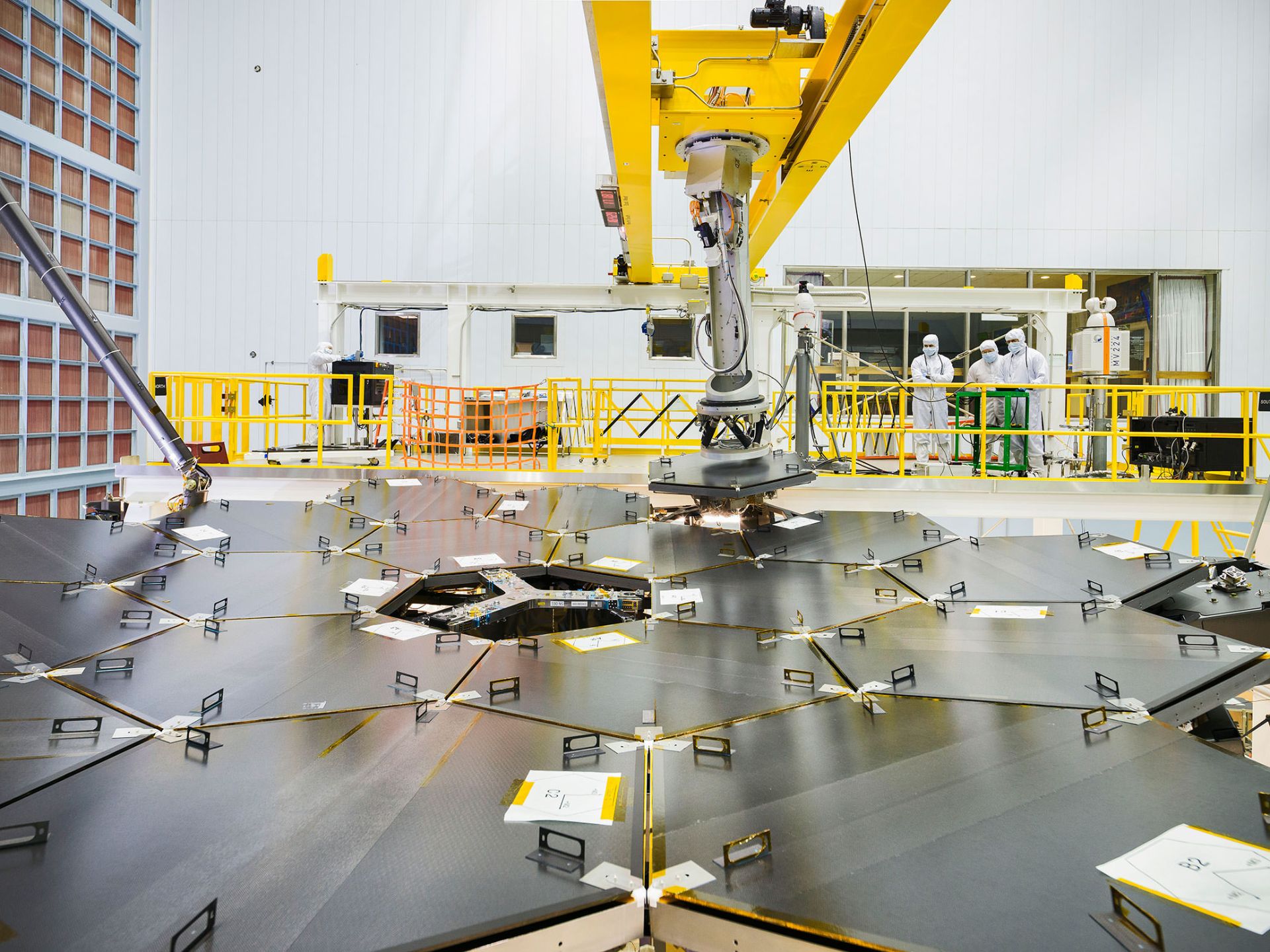
Installation of 18 parts of the main mirror of the James Webb Space Telescope.
In the first stage, the mirrors had to be polished well through different levels and stages; Because the earth’s gravity causes them to bend and they have different performances at different temperatures. First, a polishing step had to be done, and then the mirrors were sent to the freezer room, stayed there for a while, came out again, and the polishing process was repeated. The surface of the mirrors should remain shiny when exposed to low temperatures in order to have maximum efficiency; Therefore, the mirrors should be polished many times and at different temperatures to achieve an acceptable gloss and to be able to maintain their original state at low temperatures. When the beryllium was completely polished and polished, then the gold coating was added.
The reason for using gold is its high percentage of reflectivity and it can have the maximum reflectivity when the telescope is in infrared light. This gold coating must be thick enough to cover the entire surface of the mirror; But at the same time, it should be thin enough not to damage the original beryllium mirrors. The process of placing the gold coating on the mirrors is known as ” vacuum heater coating “. During this process, the mirrors were placed in a vacuum chamber and then all the air in the chamber was evacuated to create a vacuum. Then, a very small amount of gold was vaporized under certain conditions and injected into the chamber. The back layers of the mirror, which are not going to be covered with gold, are protected by layers so they don’t get damaged. After injecting evaporated gold into the chamber, the gold atoms slowly settled on the shiny surfaces of the beryllium mirrors and this process continued until the thickness of the gold coating layer reached 100 nm.
Gold is very soft and flexible, and a very thin coating of it acts like transparent glass to protect the very delicate beryllium surface and provide a highly reflective surface.

A NASA technician works on the mirrors of the James Webb Telescope at the Marshall Space Flight Center.
The launch of the James Webb Space Telescope
As mentioned in the beginning, the launch of the telescope was postponed many times and the final date was finally set for December 25, 2021. As a very sensitive telescope, James Webb had to be launched by a reliable rocket. The European Space Agency announced that it will finance the launch of James Webb and launch it into space on an Ariane 5 rocket. Ariane 5 is one of the most successful and reliable rockets in the world today, and various companies use it to transport their space cargo to Earth orbit. NASA also agreed to launch its new space telescope using this rocket from the French Guiana space base.
Ariane 5, with 108 successful launches out of 113 launches, was considered a suitable and safe option for launching James Webb. The ELA-3 telescope launch pad is located in French Guiana (located in South America) and takes advantage of its proximity to the equator. Near the equator, the rotation of the Earth can create more propulsive force and launch the rocket faster and easier. The rotation speed of the earth at the equator is 1670 km/h. In order for the telescope to fit in the upper part of the rocket, it must be folded. In the picture below, you can see how the telescope is placed in the upper part of the rocket.
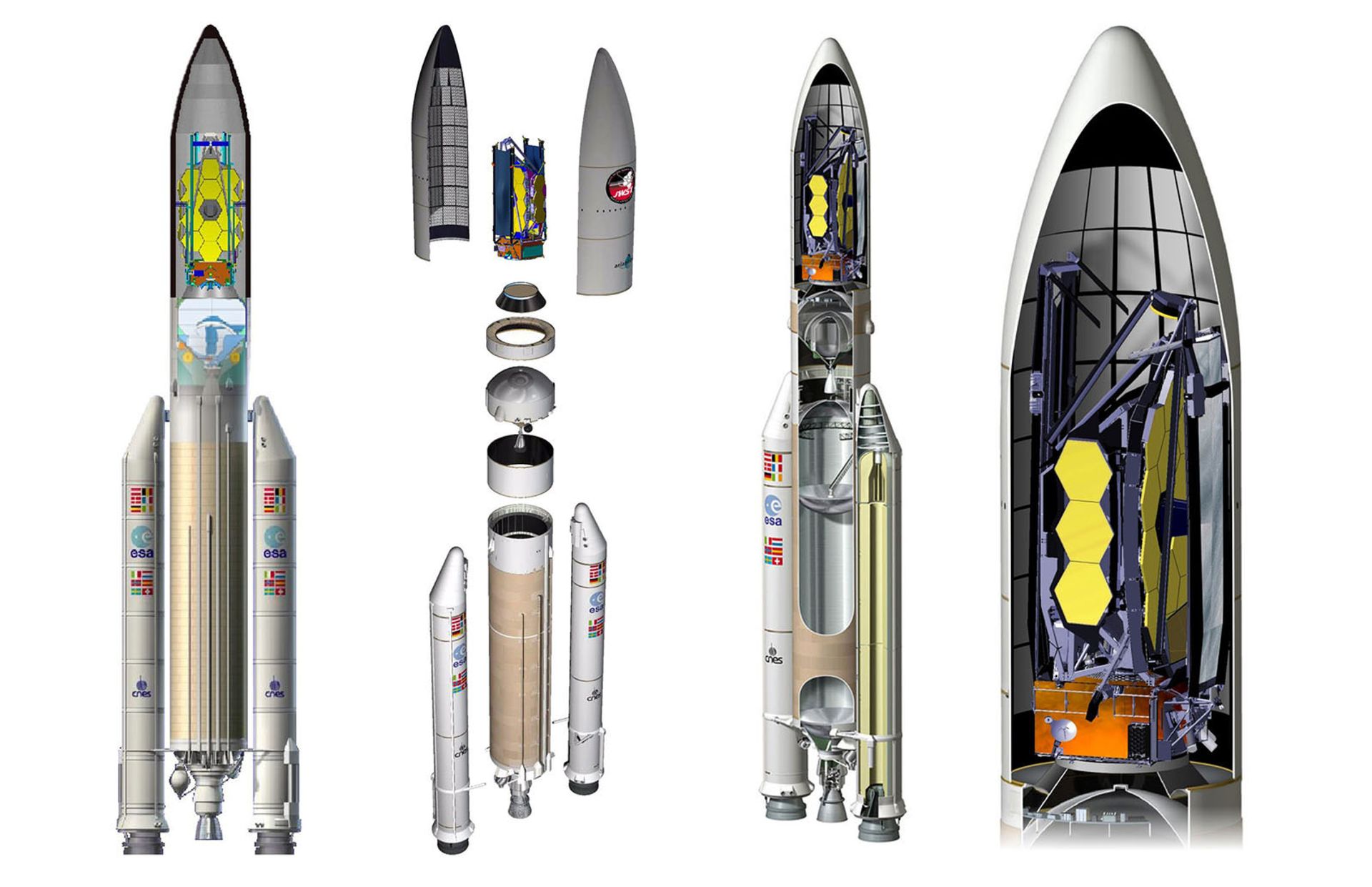
After launching and leaving Earth, the telescope began a 30-day journey to reach a distance of 1.5 million kilometers from Earth. This point is known as Lagrangian point 2. Lagrangian points are five points between two masses where the gravitational force between the two masses is neutralized. The Earth and the Sun also have 5 Lagrangian points that place satellites and space telescopes at these points. Lagrangian point 2 has an interesting feature. If any mass is located at this point, it will be in line with the earth and it will go around the sun together with the Earth. James Webb’s placement at this point makes the solar shield able to repel the heat and light of the sun, earth, and moon at the same time.
The James Webb telescope orbits the Sun at Lagrangian point 2 at the same time as the Earth
The gravity of the sun and the earth is neutralized at the Lagrangian point 2; Therefore, even if the telescope has a small propulsion force, it can always maintain itself at this point and go around the sun together with the earth. The interesting thing is that the James Webb telescope will travel around the Lagrangian point 2 in a specific orbit and will not stay still. James Webb’s orbit around Lagrangian 2 is the same as the moon’s orbit around the Earth! Traveling in this orbit makes the telescope constantly away from the shadow of the Earth and the Moon.
From the point of view of communication, being at the L2 point has advantages. Since the telescope revolves around the sun at the same time as the earth; Communication with it will be simple and it will never leave the radar point. There are three terrestrial antennas in Australia, California and Spain that communicate with James Webb. The Hubble telescope is not like that and every 90 minutes, it is placed in the shadow of the earth and it is not possible to communicate with it permanently; But the James Webb telescope is always available. The timeline of post-launch events is as follows.
The first hour
At this moment, the launch operation was carried out and the Ariane 5 rocket was able to insert the telescope into orbit 8 minutes later. After liftoff, the remaining rocket systems were disconnected from the telescope, and 33 minutes after launch, the solar panels slowly opened.
The first day
Two hours after the flight, the telescope’s large antenna was opened to communicate with Earth. About 10 hours and 30 minutes after launch, the telescope passed the lunar orbit and traveled a quarter of its way to the Lagrangian point 2. 12.5 hours after launch, the small thrusters on the telescope were activated to perform a quick maneuver to put the telescope on track.
First week
2.5 days after launch, the thrusters were reactivated to perform another maneuver. Then on the third day, the solar shield pallets were among the first pieces of equipment to be opened and some other systems were activated and opened as well. On the fifth day, the sun shield covers were also opened.
The second week
On the 10th day, the sun shield was fully opened, marking an important milestone in the telescope’s launch. Then, on the 11th day, it was the turn of James Webb’s secondary mirror to open, and finally, at the end of the second week after the launch, with the opening of the wings of the main mirror, the process of opening the telescope was successfully completed.
First month
On the 28th, with the completion of the multi-day deployment process of the mirror sections, each of these 18 sections along with the secondary mirror were removed from the launch time configuration. Then the next day, the Lagrangian 2 orbital injection maneuver was performed and James Webb successfully reached its final destination 1.5 million kilometers from Earth.
The second month
More than a month after launch, the Precision Guidance Sensor, or FGS, was activated, followed by NIRCAM and NIRSPEC. The first image that Nirkam captured was of very bright stars so that scientists could be sure that the light was properly passing through the telescope and reaching the instruments. Since the main mirrors were not yet aligned with each other, this image was out of focus and blurry. The sixth week after the launch, the process of aligning the main mirror began and they tested it by recording an image of a bright star.

The third month
During the third month, the telescope was aligned over the fields of view of all instruments, and then several days later, the near-infrared instruments, including NIRCAM, NIRSPEC, and FGS/NIRIS, were passively cooled to the minus 234-239°C temperature range.
The fourth, fifth, and sixth months
More than 120 days after the launch, the telescope mirror alignment process was successfully completed and the first high-quality image was recorded with NIRCAM. With the mirror alignment phase complete, James Webb’s team turned their attention to setting up the telescope’s science instruments.
After six months
On July 11, the commissioning of the various modes of operation of all instruments was completed and the telescope officially began its scientific activity. On July 12, during an event at the White House, NASA released James Webb’s first full-color image, the ” Deep Webb Field .” A few hours later, three more images were released to the public along with spectroscopic data of an exoplanet.
Objectives of the James Webb Space Telescope
As mentioned many times, James Webb is going to replace Hubble; So everything we’ve seen from Hubble so far, plus countless more, we should expect from James Webb. James Webb is a very powerful telescope that can observe the lights of the early universe and help us understand this important period. Scientists have already set goals for James Webb that take precedence over others. These targets include exoplanets, supermassive black holes, protogalaxies (old galaxies that gave birth to newer galaxies), quasars, watery terrestrial planets, the early universe and the reionization period of the universe, Jupiter and its important moons, comets, extragalactic planets. and Kuiper belt objects.
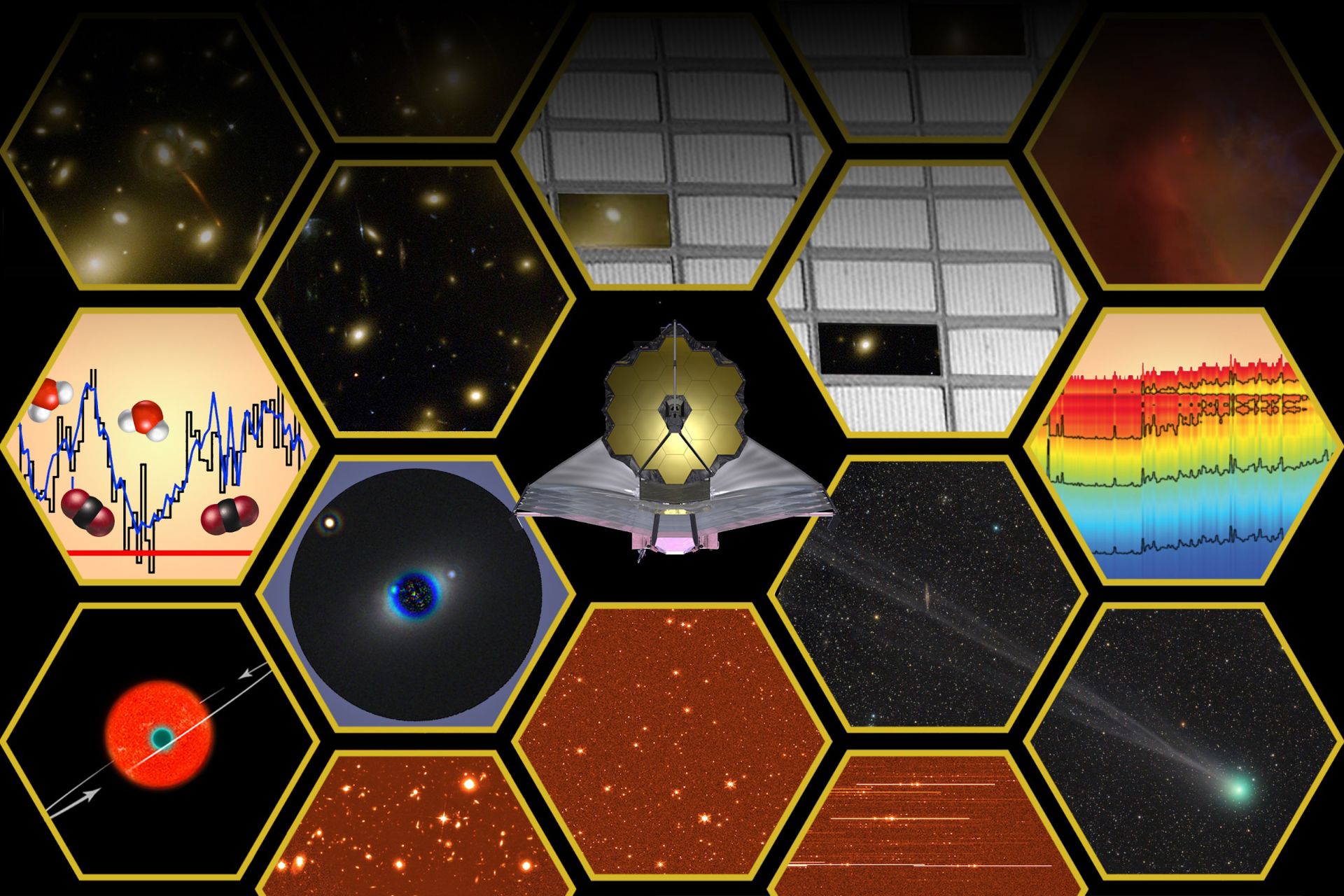
One of the targets that scientists have already begun to observe is the Trappist 1 system. This system has several Earth-like planets, and the James Webb telescope can clearly observe it and provide useful information to scientists. This system is particularly important; Even if none of its planets are habitable, scientists can gain valuable information from them that will help us find other planets.
Investigating the planets of the solar system is also on the agenda of scientists. By studying these planets, scientists can possibly obtain valuable information about the origin of life. James Webb also observes in infrared light; Therefore, we should expect it to discover new exoplanets and extragalactic planets. Due to the high power and the large size of the telescope’s main mirror, in the next few years we will see the release of unique images of galaxies and celestial bodies that we have not seen before.
James Webb Space Telescope photos
NASA has released a total of four full-color scientific images of James Webb to date (July 24, 1401). Additionally, some test images of the star HD84406 and the planet Jupiter have also been released. The objects photographed in the four mentioned images are the galaxy cluster SMACS 0732, Stephen’s quintet group of galaxies, the southern ring planetary nebula and the Carina nebula, which you can see below.
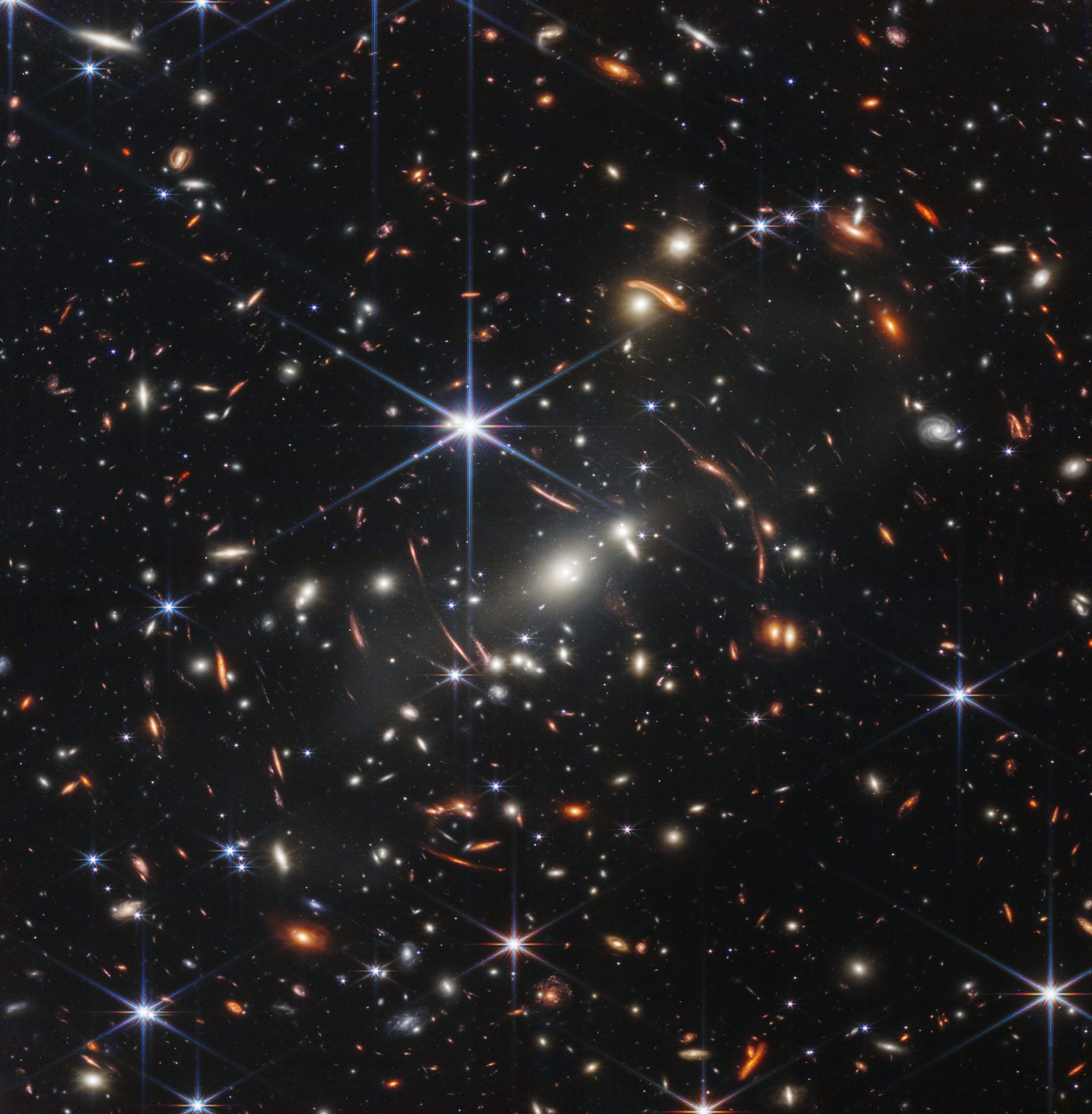

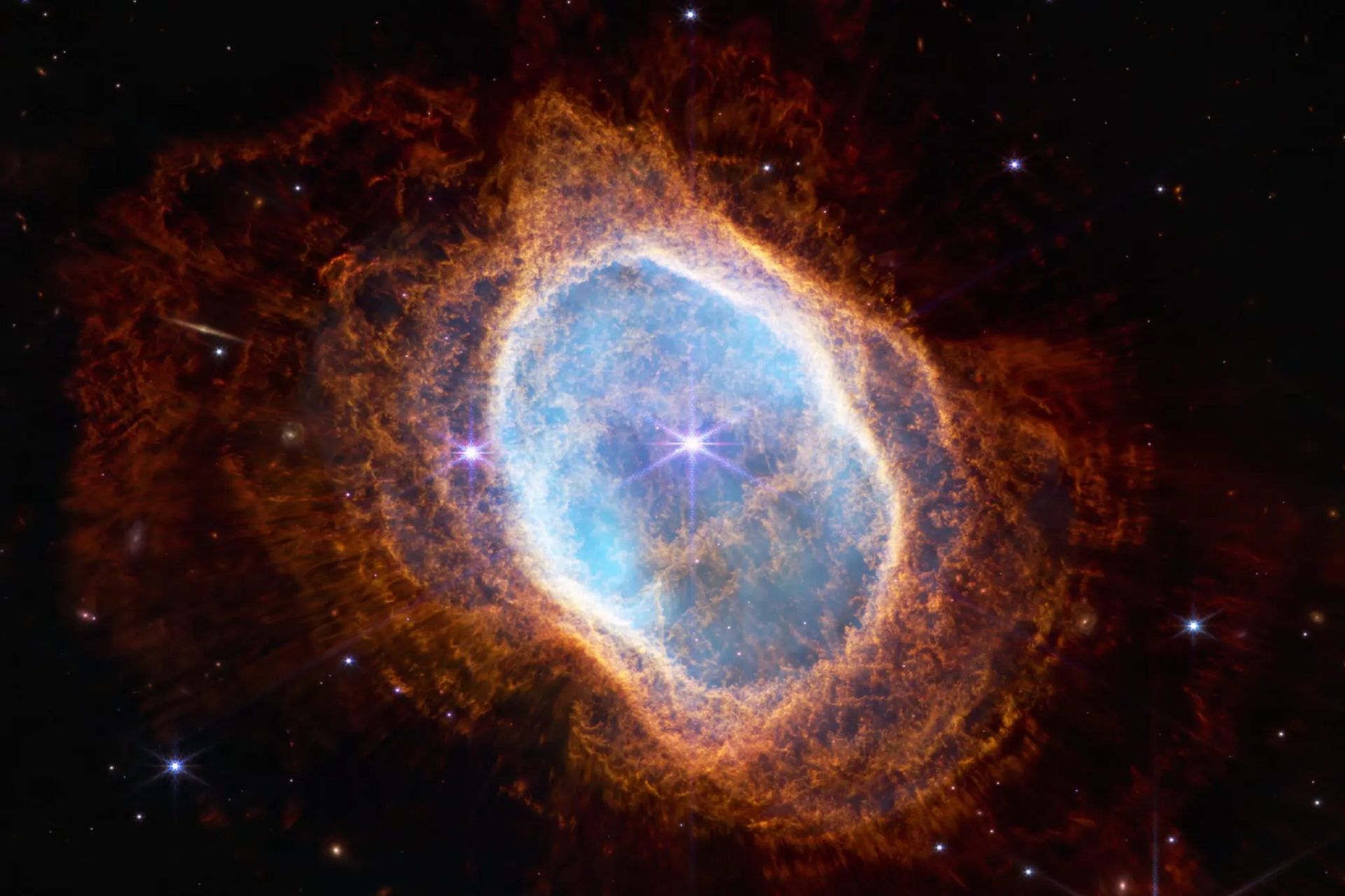

Summary
James Webb is considered the most powerful man-made space telescope. NASA, the European Space Agency, the Canadian Space Agency, and a number of American state universities have been involved in the development of this project and have made countless efforts to advance it and incurred many costs. This telescope has many firsts and uses the most advanced and sophisticated instruments. Nearly 10 billion dollars have been spent on this project, which is a huge amount. From the time of launch to the arrival at the destination, scientists and engineers spent very scary days; Because just one mistake was equal to the failure of the entire mission; But fortunately, thanks to years of testing and efforts, the telescope reached its destination safely and began the mission of observing the universe and uncovering its secrets.
In general, the James Webb space telescope can transform astronomy and cosmology and initiate a new era that will lead to an increase in our knowledge of the universe. By observing the galaxies of the early universe and the first lights, the telescope will tell us where the origin of our existence is and how the planets were formed during this time. James Webb can help us find extrasolar planets where life is possible and perhaps also determine the origin of life on Earth


You may like
-

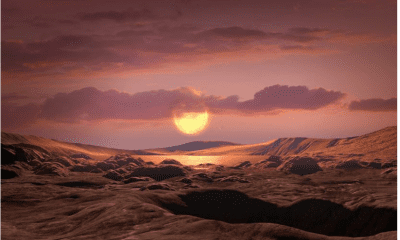


Most alien planets probably do not have day or night
-




The biography of Edwin Hubble
-

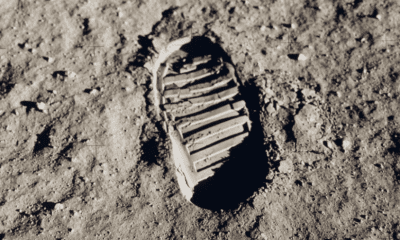


Can telescopes see astronaut footprints on the moon?
-




Can you really see the Great Wall of China from space?
-

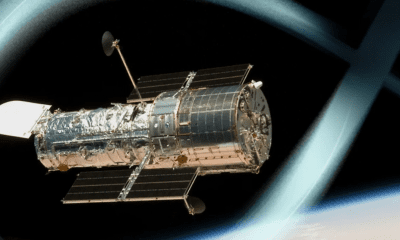


Hubble Space Telescope; A portal to the mysterious depths of the universe
-

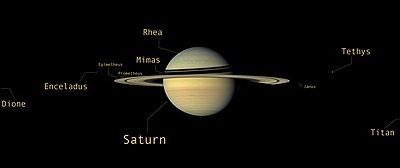


Moons of Saturn; Features and Explorations


Most alien planets probably do not have day or night
Do aliens sleep? You may take sleep for granted, but research suggests that many possible life-hosting planets may not have a day-night cycle. It is difficult to imagine the absence of day and night, but right now on Earth there are creatures living in lightless habitats in the depths or on the seabed, and they offer a vision of alien life without the existence of a circadian rhythm.
There are billions of potentially habitable planets in our galaxy; But how do we get to this number? The Milky Way has between 100 billion and 400 billion stars, seventy percent of which are cold and small red dwarf stars or M dwarfs.
According to a detailed survey of exoplanets in 2013, approximately 41% of red dwarf stars have a planet in their life belt. At this distance, the planet has the right temperature to support liquid water; Therefore, these planets have the potential to host liquid water.
We still do not know which of the discovered exoplanets have liquid water. However, 28.7 billion planets are only in the red dwarf life belt. We have not even considered the statistics of other types of stars like our sun.
 Planets close to red dwarfs are fatally locked to their star
Planets close to red dwarfs are fatally locked to their star
Rocky planets in the habitable belt of an M dwarf are called M Earths. M-Earths are fundamentally different from our Earth. One difference is that M dwarf stars are much cooler than our Sun. Also, M Earths are located at a close distance from their star, and for this reason, the gravitational influence of the star on them is strong.
The star’s gravity exerts a stronger force on the near side of the planet than on the far side. By creating friction, the planet’s rotation slows down until its orbital and translational rotations become synchronized over millions of years. Thus, M fields are likely to be deadlocked; So that one hemisphere of them is always facing the star and the other hemisphere is always behind it.
The year of a mortally locked planet is as long as its day. Earth’s moon also has a deadly lock on us. For this reason, we always see one side of it and cannot observe its hidden side.
A planet in mortal lock looks strange, But most possible habitable planets are of this type. Our nearest planetary neighbor, Proxima Centauri b, located in the Alpha Centauri system four light-years from Earth, is likely a fatally locked M-Earth.
As a result, unlike our Earth, M Earths have no day or night and even seasons; But terrestrial life, from bacteria to humans, has circadian rhythms corresponding to the day and night cycle. Sleep is one of the most obvious consequences of circadian rhythm.
On Earth, some creatures live in absolute darkness
The circadian cycle affects biochemistry, body temperature, cell regeneration, behavior, and much more. For example, people who are vaccinated in the morning produce more antibodies than people who are vaccinated in the afternoon; Because the response of the immune system is different during the day.
We cannot yet say with certainty how much periods of inactivity and regeneration affect life. Perhaps organisms that evolved without cyclical time never needed to rest.
If you doubt it, you can look at terrestrial organisms such as cave dwellers, deep sea life, and microscopic organisms in dark environments such as the earth’s crust and the human body that thrive in space away from daylight.
Many life forms have biological rhythms that are synchronized to stimuli other than light. Naked burrowing mice spend their entire lives underground and never see the sun, But their day and night hours are proportional to the daily and seasonal cycles of temperature and rainfall. Also, deep-sea bivalves and thermal well shrimps coordinate with ocean tides.
Bacteria that live in the human gut synchronize with melatonin fluctuations in the host’s body. Melatonin is a hormone in the body that is produced in response to darkness. Temperature changes that occur in thermal wells, humidity fluctuations chemical changes, and environmental currents can all cause biological fluctuations in the body of living organisms.
According to new research, M-Earths can have alternate cycles for days and seasons. To evaluate days and seasons on exoplanets, scientists have adapted climate models to simulate the environment of M-Earths and planets such as Proxima Centauri b.
According to the simulations, the contrast between the night and day sides of the planets produces gusts and atmospheric currents similar to Earth’s gust currents. If a planet has water, its dayside is likely to have thick thunderclouds.
The interaction between winds, atmospheric waves, and clouds can change the climate and produce regular cycles of temperature, humidity, and rainfall. The length of these cycles varies from hundreds to thousands of Earth days depending on the state of the planet, But it has nothing to do with the rotation period of the planet. Although the stars in the sky of these planets remain constant, the environment changes.
Perhaps life on M-Earths evolved to match biological rhythms and climatic cycles, or perhaps evolution arrived at a more exotic solution. One can imagine species that live on the day side of the planet going to the night side to rest and regenerate themselves.
These descriptions remind us that if life is out there, it can challenge assumptions we don’t know exist. The only certainty is that it will surprise us.


nameNoun: Any nounal word or phrase which indicates a particular person, place, class, or thing.
Noun: reputation.
Noun: An abusive or insulting epithet.
Noun: A person (or legal person).
Noun: Those of a certain name; a race; a family.
Noun: authority; behalf.
Noun: A unique identifier, generally a string of characters.
Noun: An investor in Lloyd’s of London bearing unlimited liability.
Verb: To give a name to.
Verb: To mention, specify.
Verb: To identify as relevant or important
Verb: To publicly implicate by name.
Verb: To disclose the name of.
Verb: To designate for a role.
Verb: To initiate a process to temporarily remove a member of parliament who is breaking the rules of conduct.
Noun: Any of several types of true yam () used in Caribbean Spanish cooking.
SProper noun: in which several of the axioms of ZF are derivable as theorems.
Noun: Any nounal word or phrase which indicates a particular person, place, class, or thing.
Noun: reputation.
Noun: An abusive or insulting epithet.
Noun: A person (or legal person).
Noun: Those of a certain name; a race; a family.
Noun: authority; behalf.
Noun: A unique identifier, generally a string of characters.
Noun: An investor in Lloyd’s of London bearing unlimited liability.
Verb: To give a name to.
Verb: To mention, specify.
Verb: To identify as relevant or important
Verb: To publicly implicate by name.
Verb: To disclose the name of.
Verb: To designate for a role.
Verb: To initiate a process to temporarily remove a member of parliament who is breaking the rules of conduct.
Noun: Any of several types of true yam () used in Caribbean Spanish cooking.
The biography of Edwin Hubble, the legendary astronomer who discovered the extragalactic space
Edwin Powell Hubble known as Edwin Hubble was a famous American astronomer who played an important role in formulating the basic principles of extragalactic and observational astronomy. Historians and astronomy experts consider him one of the most important astronomers in history. Hubble placed the space clouds, which before her time were known as gas and dust particles and were in the category of nebula or nebula, in the category of galaxies.. Historians consider Hubble’s discovery of other galaxies equal to Copernicus’ theory in terms of scientific value. Copernicus proved that the Earth is not at the center of the solar system, and Hubble proved that the Milky Way is not the center of the universe.
One of the important scientific relics of this astronomer is Hubble’s law in space. In short, this law states that the universe is expanding at a constant rate. In addition, in this law, the distance of each galaxy from the edge of the universe is directly proportional to its speed. Of course, this law was discovered two years before Hubble’s presentation by Georges Lemaitre, but its fame came to Hubble. The Hubble telescope is one of the most famous monuments built in the name of this legendary astronomer. An example of this telescope is installed in his hometown of Marshfield, Missouri. This telescope was sent into Earth orbit in 1990 to capture more detailed images of space outside the Milky Way.
Edwin Hubble has another great achievement in the field of cosmology and that is the classification of galaxies. This classification has been used by astronomers for many years. Hubble played a significant role in adding the astronomy category to the Nobel Prize. Of course, the sudden death of this scientist in 1953 prevented him from receiving this award.
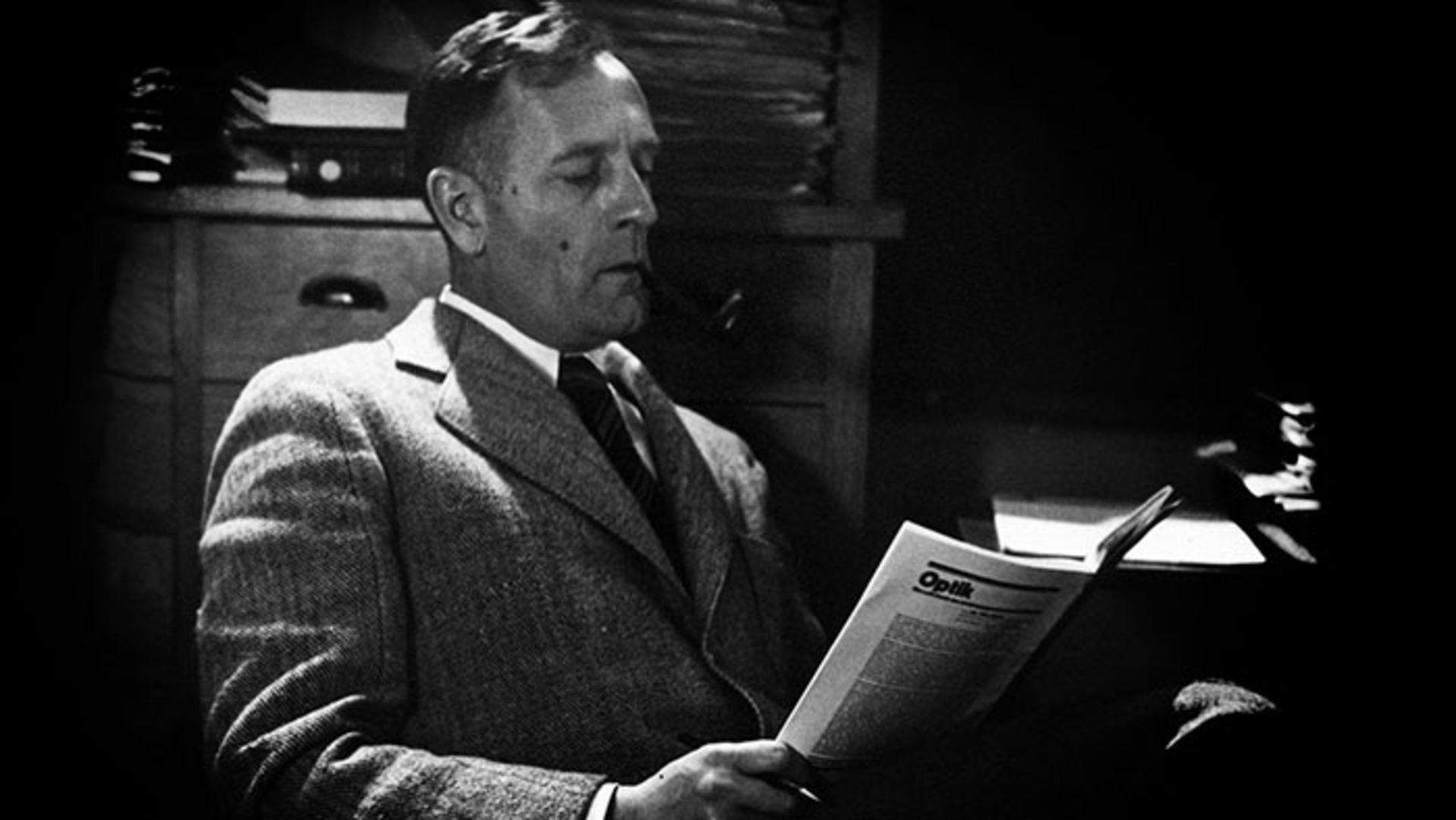
Birth and education
Edwin Hubbell was born on November 20, 1889, in Marshfield, Missouri. His mother was Virginia Lee James and his father was John Powell Hubble. His father was a lawyer and insurance businessman. Edwin was the third child out of 8 children in this family. Of course, like many children of those years, some of Edwin’s siblings died in childhood.
Hubbell lived in a rich family that had to migrate many times because of his father’s work style. During these trips, which were generally in cities around Chicago and Illinois, they lived in luxurious houses with many servants. The children of the Hubble family were all brought up with work and responsibility; Because their parents believed that this style of upbringing would increase their sense of responsibility.
Edwin Hubble was very interested in sports as a child and teenager
As a child, Edwin struggled to keep up with his older siblings and students, so he learned to read before school. He was very fond of adventure books by Jules Verne and H. Rider Haggard. Edwin’s grandfather was an amateur but enthusiastic astronomer. At the age of 7, he got acquainted with one of his grandfather’s telescopes and had his first experience of space exploration. The interesting thing is that instead of participating in the celebration, he observed the space with this telescope on his 8th birthday.
Hubble completed his high school education at Wheaton High School near Chicago. He finished high school easily and with excellent grades in English, mathematics, biology, chemistry, physics, Latin, and German languages. Of course, in high school, Edwin was more into sports than studying, and he owed his high grades to his innate intelligence. On his father’s advice, he was busy delivering goods on holidays. Finally, Edwin Hubbell graduated from high school in 1906 at the age of 16 and received a scholarship to the University of Chicago. He worked at this university as a laboratory assistant of the famous physicist Robert Millikan (Nobel Prize winner).
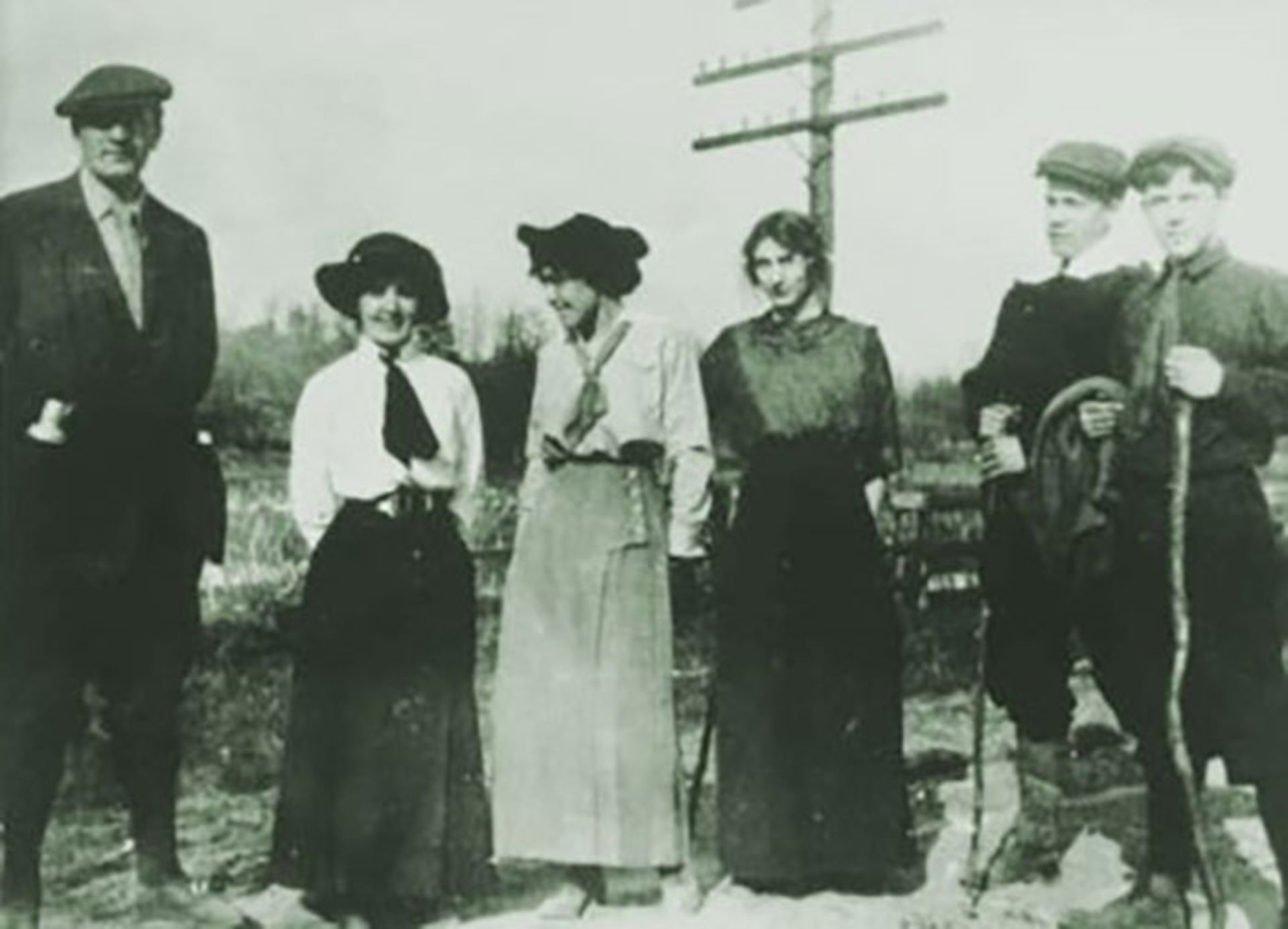
Edwin Hubble (left), with friends after returning from Oxford
After entering the university, sports still occupied a large part of Hubble’s time. He was fond of sports such as basketball and boxing. He was a tall and strong person and he left several records during his university days. Edwin Hubble graduated from the university in 1910 with a bachelor’s degree in general science and honors in physics and astronomy.
After graduating from the University of Chicago, Hubbell entered Oxford University with a Rhodes scholarship and studied there for three years. Hubble was quickly influenced by English culture and changed many of his past behaviors and habits and adopted an English appearance. Contrary to his strong interest in experimental sciences and especially astronomy, he chose the field of law theory out of respect for his father and graduated from Oxford in 1912. He stayed at this university for another year and studied Spanish. While studying at Oxford, Hubble had another achievement including traveling around Europe. In these trips, in addition to having fun, he paid special attention to planning and thinking about his future. In those years, Edwin wrote in a letter to his mother:
Work is pleasant when it is for a great purpose and end. A goal so great that the thought of it and the anticipation of its achievements, will remove all the fatigue of the difficult task. When I find the purpose and principles I want, I leave everything for it and dedicate my life to it.
Edwin’s father died in the fall of 1912. He asked his father for permission to leave Oxford to visit him but was refused. Young Edwin remained in Oxford and his father died in January 1913.
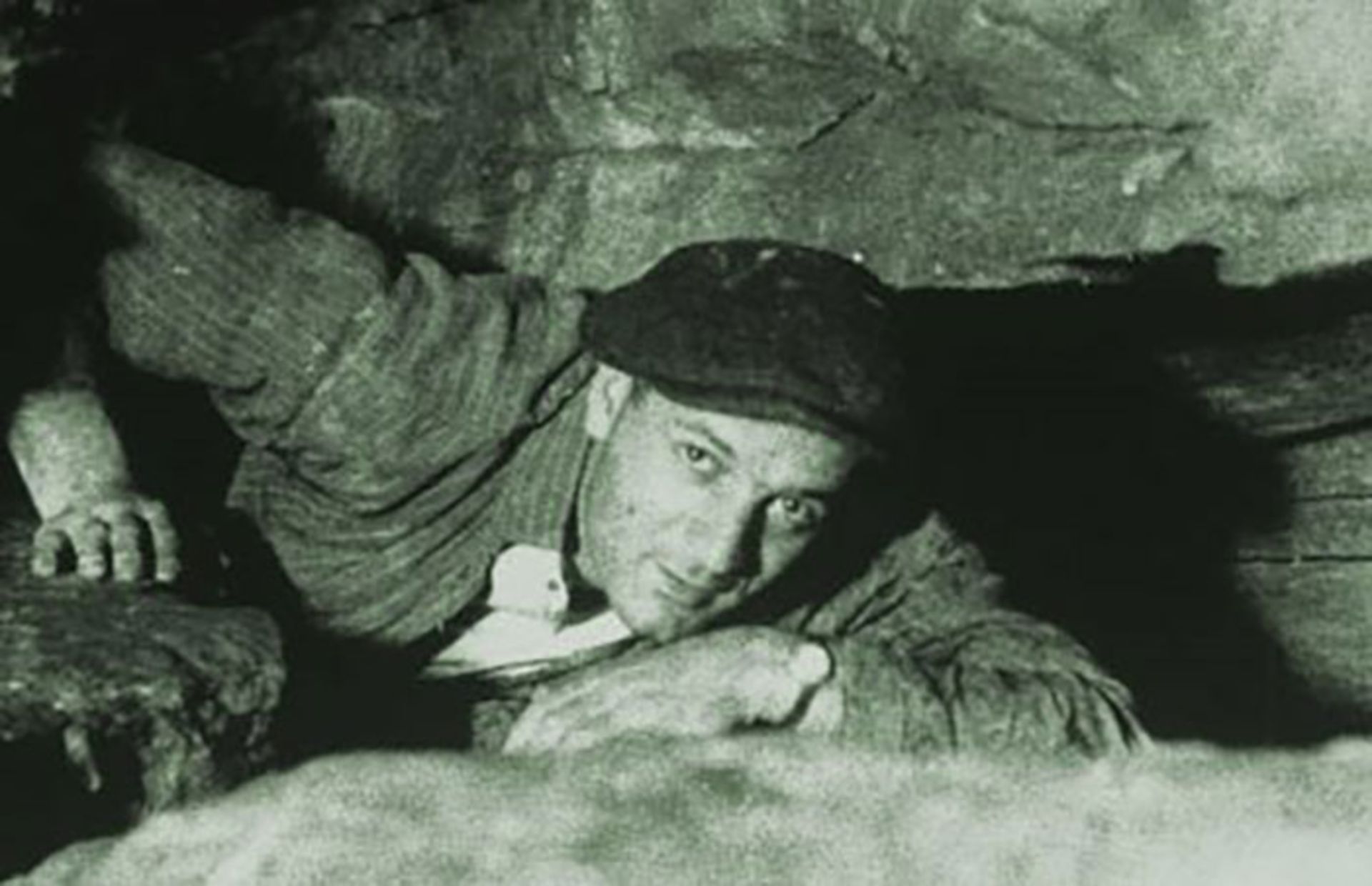
Hubble exploring the cave
His Career
Hubble’s first job was teaching high school Spanish and physics.
Edwin Hubble returned to America in the summer of 1913. He was employed as a Spanish and Physics teacher at New Albany High School in Indiana. In addition, he coached the school’s basketball team and had a part-time job as a German translator. Although Hubble was a popular teacher, he did not enjoy his job. For this reason, he corresponded with Forrest Ray Moulton, professor of astronomy at the University of Chicago, and asked him for advice on collaborating on astronomy projects and higher education in this field. Moulton also introduced Hubble to Edwin Frost, director of the Yerkes Observatory in Wisconsin. In his letter, he introduced Hubble as a hardworking person, enthusiastic about science, and useful to Frost.
Finally, at the age of 24, Edwin entered the field of science, which he had become interested in nearly two decades ago by observing space through the lens of his grandfather’s telescope. Upon entering the observatory, he began his doctoral course in astronomy and received his degree in 1917 with a thesis entitled Photographic Investigations of Faint Nebulae. With the outbreak of World War I, Hubble served in the army for a year and rose to the rank of colonel despite not being actively involved in combat. He then went to Cambridge University to study astronomy.
Edwin Hubble started working at the Mount Wilson Observatory in California in 1919 at the age of 30. This observatory is famous for its excellent weather and excellent observation conditions. These factors made Hubble research in this place until the end of his life.

Hubble membership card in the army
Scientific achievements
As mentioned, Hubble wrote his doctoral dissertation on nebulae. He continued his research at Mount Wilson using the world’s largest telescope, the Hooker telescope. Hubble’s great discoveries, including galaxies beyond the Milky Way and the phenomenon of redshift, were the results of this astronomer’s research using the Hooker telescope.
In 1912, the American astronomer Henrietta Leavitt published an important discovery related to stars called the Cepheid variable. Beginning in the 1930s, Hubble was able to discover similar stars in nebulae using the Hooker telescope. While studying the Andromeda Nebula, he realized that these stars are very far from Earth and much farther than the stars of the Milky Way.
The discovery of other galaxies and the greatness of the universe was the greatest achievement of this scientist
Eventually, Hubble discovered that the Andromeda Nebula is actually a galaxy. Until then, most astronomers believed that the Milky Way and the Universe were a single entity. Hubble discovered that the universe is much larger than the Milky Way and consists of “island universes”. His findings in this historical discovery are summarized as follows:
- His high-quality images of Andromeda and the Triangulum Nebula showed a massive cluster of stars.
- Many of the stars were of the Cephasian type.
- The studied nebula is one million light years away from Earth. 4 times more than all the objects that had been discovered until that time. (Of course, this distance is proven to be equal to 2.5 million light-years today.)
- The diameter of the Andromeda Nebula is 30 thousand light years. (Today, these dimensions have been proven to be 220,000 light years.)
- Andromeda galaxy emits light equal to one billion suns of our system.
Hubble published his findings three days after his 35th birthday. Of course, his discoveries were not published in a scientific journal, but in the New York Times. The results of his research were debated among astronomers for some time, and finally, his paper was reviewed at the meeting of the American Astronomical Society on January 1, 1925. Hubble changed everyone’s view of the universe with his discoveries. He proved that our vast galaxy, host to the Sun and hundreds of billions of similar stars, is only one of the billions of galaxies in the universe.

Andromeda Galaxy
In addition to this discovery, Hubble provided a standard for classifying galaxies that was used by astronomers for years.
Redshift phenomenon
Prominent astronomer Veslu Slifer has also researched nebulae. He stated in his report in 1913 that the light of the nebula tends towards the red color of the color spectrum. He explained his discovery as a form of the Doppler effect. According to the same explanation, the light tends to the red side of the color spectrum as the emission source moves away, similar to the Doppler effect. To test his discovery, Slifer studied many nebulae. He came to the conclusion that the light of many of these nebulae has a fast transition towards red color and as a result, they are moving away from Earth at a high speed.
Hubble stated that galaxies are moving away from each other at high speed
In 1929, using Slifer’s findings and combining them with his own discoveries and his assistant Milton Humson’s, Hubble was able to find an explicable relationship between galaxy distance and redshift state. He recorded his findings in a formula known today as Hubble’s law. This formula is displayed as v = Hr, where v is the velocity, r is the distance, and H is Hubble’s constant. This constant was first named as 530 by Hubble, but today, using advanced research and tools, the exact number is 70.
The world is expanding
One of the main interpretations of Hubble’s law is that we live in an expanding universe. Of course, Hubble himself believed that there is not enough credible evidence to prove this interpretation of the redshift effect. The remarkable point is that although Hubble drew the attention of the scientific community to this law, the law was discovered two years earlier by Georges Lemaitre. In fact, Lemaitre’s interpretation of this law is more accepted by new cosmologists; Because he used Einstein’s law of relativity for his interpretation.
However, Hubble’s point of view was quite logical. He believed that the theory of red shift can only be accepted as a proof of the expansion of the universe when the density of matter in the universe is much higher than the amount discovered up to that time. These statements have been the basic foundations for the proof of dark matter in the universe. Hubble said about the density of materials needed to prove the effect of redshift:
The required density of matter is several times higher than the estimated maximum density of matter concentrated in the nebula. Furthermore, we have no evidence of significant interstellar matter increasing the density.

Classification of galaxies by Hubble
However, although Hubble had a lot of resistance to accept the effect of redshift, in his research he found that the speed of this expansion is slowing down. However, these findings and research on the speed of galaxy expansion are still ongoing and astronomers discover new issues every day.
One of the historical events regarding the theory of the expanding universe is Albert Einstein’s meeting with Edward Hubble in 1931. The two met at Mount Wilson Observatory. In 1917, in his theory of relativity, Einstein considered the universe to be constant and without change in size. He did not see any end or end to the universe. Although his research showed signs of the expansion of the universe, this scientist tried to deny it by determining a constant called the cosmic constant.
However, the January 1931 meeting earned Hubble the nickname of the man who forced the world’s smartest man to change his mind. This meeting caused Einstein to call his previous calculations the biggest mistake of his scientific life, and as a result, Hubble’s findings became the center of attention in scientific circles.
The Big Bang theory is influenced by the findings of this scientist about the expansion of the universe
In 1935, Hubble discovered the 1373 asteroid named Cincinnati. A year later he published the book ” The Realm of the Nebulae “. This book is a historical interpretation of his experiences and research on intergalactic astronomy. With the outbreak of World War II, Hubble once again served in the US Army at the Aberdeen Proving Ground. He was in charge of the ballistics research department in this area. His extensive research resulted in several improvements in the power of ballistic bombs and projectiles. One of his major practical achievements in this research was the improvement of ballistic projectile components, which resulted in a high-speed camera to study the characteristics of the bomb after launch. After the war, Hubble returned to Mount Wilson and spent some time at the Palomar Observatory in California.

Edwin Hubble in old age
In addition to scientific research, Edwin Hubble worked hard to convince the Nobel Prize Society to add astronomy to the award’s branches. He intended to add this science to this event as an independent subsection of physics. He believed that the efforts of astronomers in stellar physics should be appreciated. Unfortunately, after Hubble’s death, this society decided to appreciate this science as a branch of physics.
Personal life and death
Edwin Hubbell married Grace Burke Leib in 1924 at the age of 34 . They had no children. One of Hubble’s pastimes was collecting books. He was generally interested in books related to the history of science. In addition to scientific research, Hubble was also a member of the Board of Trustees of the Huntington Library in San Marino. The discovery of distant galaxies made him so famous that in 1948 his picture appeared on Time magazine. He and his wife had a close relationship with Hollywood stars and artists such as Aldous Huxley.
In 1949, at the age of 59, Edwin Hubbell suffered a heart attack while on vacation in Colorado and was nursed back to health by his wife. Of course, after this incident, the intensity of his research activities decreased until he died on September 28, 1953, due to a blood clot in the brain. He had willed that his burial place should not be known and personal notes were also destroyed by his wife. Grace also died in 1980 and was buried in a secret place next to her husband.
Awards and honors
The Cleveland Newcomb Prize was awarded to Edwin Hubble in 1924. In 1938, he was awarded the Bruce Medal, and a year later, he was awarded the Franklin Medal Science and Engineering Award by the Franklin Institute in Philadelphia. The Gold Medal of the British Royal Astronomical Society was awarded to this legendary astronomer in 1940. The Legion of Honor, which is a military award from the US Armed Forces, was awarded to him in 1946 for his research in the field of ballistics.

Hubble Space Telescope
After the death of Edwin Hubble, in addition to the aforementioned awards, other honors were also registered to pay tribute to this American scientist. The Missouri City Hall of Fame inducted Edwin Hubbell in 2003. In 2008, a commemorative stamp was printed in the name of this scientist, and in 2017, the Indiana Basketball Hall of Fame registered Hubble’s name.
Asteroid number 2069 and a hole in the moon are among the celestial objects that are registered in the name of this scientist. A planetarium at Edward R. Morrow High School in Brooklyn was also named after this scientist, and a street in Missouri was named after Edwin Hubble.
Certainly, the most famous monument of Edwin Hubble is the Hubble Space Telescope, which was launched in 1990. The main purpose of launching this telescope was to accurately calculate Hubble’s constant in his famous formula. Anyway, astronomers with this telescope first considered the number 72 as a constant in 2001, and then in 2006, by studying the microwave background of the galaxy, they reached the exact number 70. In addition, the Hubble telescope made it possible to observe not only the expansion of the universe but also the acceleration of this expansion. Today, the force that caused this expansion is called dark energy in scientific documents.


Can telescopes see astronaut footprints on the moon?
In the early 2000s, when there were occasional people who believed that the moon landing was a hoax, the argument was made that if NASA’s Hubble Space Telescope was powerful enough to see the tiny details of distant galaxies, why couldn’t it take the shoes of the Apollo astronauts on the moon?
The aforementioned argument, like many conspiracy theories, seems convincing on the surface; But with the slightest scrutiny, it loses its value. Those who are fooled by this claim are wrong about two things: how telescopes work and how big space is.
Astronomer Phil Platt explains on the Scientific American website that many people think a telescope’s job is to magnify images. Of course, manufacturers of cheap telescopes like to advertise them this way, printing statements like “150x magnification power” in big letters on the box of the telescopes, along with very misleading pictures of much larger telescopes. Although magnification is important, the true power of a telescope is in its resolution. This difference is subtle but very important.
Magnification is how much you can focus on an object and make it appear larger. This is important because while astronomical objects are physically very large, they are very far away and thus appear small in the sky. Magnifying them makes them easier to see.
Magnification is important, but the true power of a telescope is in its resolution
On the other hand, clarity or resolving power is the ability to differentiate between two objects that are very close together. For example, you might think of two stars orbiting each other (a binary star) as one star; Because their distance is very small and the naked eye cannot distinguish them. But if you look at them with a higher-resolution telescope, you may be able to see that they are two separate stars.
Isn’t that the Zoom? No; Because zooming in only makes everything bigger. This can be easily illustrated with the following image: zoom in as much as you want on the image, but once you pass a certain limit, you only enlarge the pixels and get no new information. To overcome this obstacle, you need to have high resolution rather than zoom.
 Hubble Space Telescope image of the Apollo 17 landing area in the Taurus-Lytro Valley of the Moon. This image lacks the necessary resolution to show the traces of the moon landing or the movement of astronauts on the moon.
Hubble Space Telescope image of the Apollo 17 landing area in the Taurus-Lytro Valley of the Moon. This image lacks the necessary resolution to show the traces of the moon landing or the movement of astronauts on the moon.
The problem is that resolution depends on the telescope itself, meaning that a dramatic increase in resolution usually requires a much larger telescope; But no matter how big your telescope gets, it will still have limited resolution.
When light from an infinitesimal point, such as distant stars, passes through a telescope, the light is slightly scattered within the telescope’s optical instruments (mirrors or lenses). This fundamental property is called light diffraction and is unavoidable. The resolution of telescope images depends partly on the size of its mirror or lens. The larger the telescope’s light-gathering instrument, the higher its image resolution.
The way light propagates in optical equipment depends on wavelength, with shorter wavelengths producing higher resolution. So two nearby blue stars may be distinguishable in a telescope, while two red stars at the same distance may not be distinguishable.
When deciding on the size of a telescope’s camera pixels, astronomers must consider the wavelength they want to observe. Otherwise, they just magnify the noise; Like the previous example about zooming too much on the photo.
All these lead to an amazing result. The Hubble Space Telescope has a mirror with a diameter of 2.4 meters and the James Webb Space Telescope (JWST) has a mirror with a diameter of 6.5 meters. Therefore, the resolution of the James Webb telescope images can be expected to be much higher. At some wavelengths, it is: the shortest wavelength that the James Webb Space Telescope can see is about 0.6 microns (what our eyes perceive as orange light), and the resolution is technically much better than that of the Hubble image.
However, the James Webb Space Telescope was designed as an infrared telescope. At those wavelengths, say around two microns, the resolution is comparable to what Hubble can see at visible light wavelengths. In the mid-infrared, i.e. wavelengths of 10 to 20 microns, the resolution of the James Webb Space Telescope images is even lower. However, because the James Webb is the largest infrared telescope ever sent into space, it can provide the sharpest images we’ve ever had at these wavelengths.
 No telescope on Earth or in low Earth orbit can capture an image like this, a high-resolution view of a boot on the moon’s surface.
No telescope on Earth or in low Earth orbit can capture an image like this, a high-resolution view of a boot on the moon’s surface.
Astronomers measure resolving power as an angle on the sky. From the horizon to the highest point of the sky is 90 degrees and each degree is divided into 60 arc minutes and each arc minute into 60 arc seconds. For example, the angular diameter of the moon from our point of view in the sky is about half a degree. That is, if we look at the moon from the Earth, the moon in the sky occupies a space equal to half a degree of the full circle of the sky, which is equivalent to 30 minutes of arc or 1800 seconds of arc.
The maximum resolution of a telescope refers to the smallest angular distance between two objects that the telescope is able to distinguish as two separate objects. This resolution is expressed as an angle.
At its best, the resolution of the Hubble telescope is about 0.05 of an arc, which is considered a very small angle. But the amount of detail Hubble is able to see depends on the distance and physical size of the target. For example, 0.05 seconds of arc is equivalent to the apparent size of a small coin that can be seen from about 140 km.
In this way, we return to the discussion of conspiracy theorists and their claims regarding the observation of astronaut footprints on the moon. Galaxies are usually tens of millions or even billions of light years away from Earth. At those distances, the Hubble telescope can distinguish objects with dimensions of several light years (i.e. tens of trillions of kilometers) with its best resolution. So even though it looks like we’re seeing galaxies in great detail in those amazing Hubble images, the smallest we can see is still pretty big.
At the same time, the moon is only about 380 thousand kilometers away from us and from the Hubble telescope. At this distance, the resolution of the Hubble telescope is surprisingly limited, unable to resolve objects smaller than about 90 meters. As a result, not only can we not see the astronauts’ footprints in the Hubble images, but we can’t even see the Apollo moon landings, which are about four meters across. Hubble’s resolution at this distance is so limited that it cannot distinguish details smaller than about 90 meters, so it is not possible to see objects smaller than this on the Moon.
 An image of the Apollo 11 landing site captured by NASA’s Lunar Reconnaissance Orbiter (LRO). Although the LRO telescope uses much smaller lenses than the Hubble Space Telescope, its proximity to the lunar surface has made it possible to see details such as the Apollo 11 lunar lander and astronauts’ footprints.
An image of the Apollo 11 landing site captured by NASA’s Lunar Reconnaissance Orbiter (LRO). Although the LRO telescope uses much smaller lenses than the Hubble Space Telescope, its proximity to the lunar surface has made it possible to see details such as the Apollo 11 lunar lander and astronauts’ footprints.
In the images taken by the Nass Lunar Reconnaissance Orbiter (LRO), we can see the moon landings and the footprints of the astronauts. Although the camera of this orbiter has a mirror with a diameter of only about 20 cm, the spacecraft is in lunar orbit and passes the Apollo landing sites at an altitude of 50 km.
The reason NASA’s Lunar Reconnaissance Orbiter can see more detail on the surface of the moon is because it is so close to the surface of the moon. This is why we send probes to planets: it allows us to get much better pictures of them. Sometimes, there’s no substitute for being there.
The lesson we learn from this topic is that the way tools actually work is often more complex and different than we expect. Furthermore, claims that may seem reasonable fall apart with a little scientific scrutiny. If a telescope is only advertised based on magnification, it’s best not to buy it and look for other options. It may seem difficult, but with a little determination, you will succeed.


Do animals have an understanding of the concept of death?


What is Kali Linux? Everything you need to know about this popular but mysterious distribution


Sony Brand Story; From the production of rice cookers to becoming one of the most famous companies in the world


How did the people of the past imagine the future?


Mammoth and dodo return to nature


Canopus; What do we know about the second brightest star in the sky?


How to use iMessage on Android?


Can humans endure the psychological torment of living on Mars?


Xiaomi Glorimi M2 Max watch review; Alternative economic option for iPhone owners


Artificial intelligence problems; Frauds based on artificial intelligence and methods to deal with them
Popular
-



 Technology1 year ago
Technology1 year agoWho has checked our Whatsapp profile viewed my Whatsapp August 2023
-



 Technology1 year ago
Technology1 year agoSecond WhatsApp , how to install and download dual WhatsApp August 2023
-



 Technology1 year ago
Technology1 year agoHow to use ChatGPT on Android and iOS
-



 AI2 years ago
AI2 years agoUber replaces human drivers with robots
-



 Technology1 year ago
Technology1 year agoThe best Android tablets 2023, buying guide
-



 Technology1 year ago
Technology1 year agoThe best photography cameras 2023, buying guide and price
-



 Humans2 years ago
Humans2 years agoCell Rover analyzes the inside of cells without destroying them
-



 Technology1 year ago
Technology1 year agoHow to prevent automatic download of applications on Samsung phones
